Tom's Hardware Verdict
While the EVGA 750 G5 is competent, it's inferior to its predecessor, the 750 G3 and to competitors.
Pros
- +
Full power at 47 degrees Celsius
- +
Tight load regulation
- +
Long hold-up time
- +
Low inrush current
- +
Fully modular
Cons
- -
Noisy
- -
Poor transient response
- -
High Vampire Power
- -
Low efficiency with 2% load
- -
Not compatible with the alternative sleep mode
- -
Small distance between connectors
Why you can trust Tom's Hardware
Specifications and Part Analysis
The SuperNOVA 750 G5 achieves a decent overall performance score, which however is lower than its main competitors, the Corsair RM750x and the Seasonic Focus Plus Gold 750W. Unfortunately, FSP, the manufacturer of EVGA's new G5 line, didn't pay much attention to the fan speed profile, so the 750 G5 is noisy. Moreover, its vampire power exceeds 0.25W with 230V input, so it fails to meet even the lowest Cybenetics efficiency standard (ETA-S). The SuperNova 750 G5 definitely fails to make our list of the best power supplies.
EVGA's high numbered G, P, and T lines (G2, G3, P2, and T2) exclusively used Super Flower's Leadex platforms, which are among the best in today's market. Nonetheless, recent U.S. tariffs affected manufacturers with production lines in China, so EVGA had to turn to another OEM for the new G5 line, which will replace the G3 models. Probably this is the best time to grab a G3 PSU, even a G2 if you manage to find any before they vanish from the stores. At publication time, Newegg was still selling the G3 in the U.S. for $109 while the G5 was priced $30 lower.
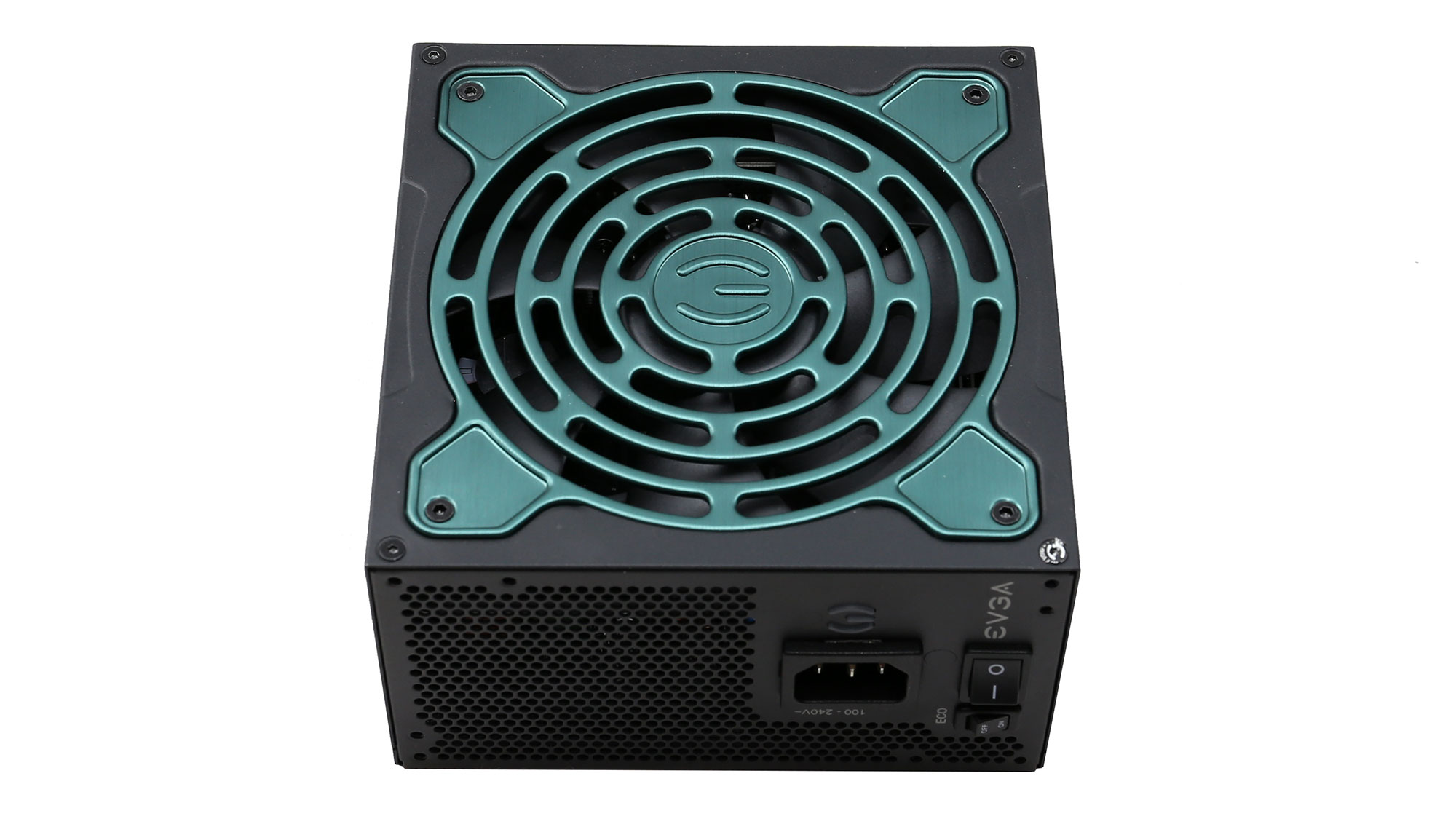
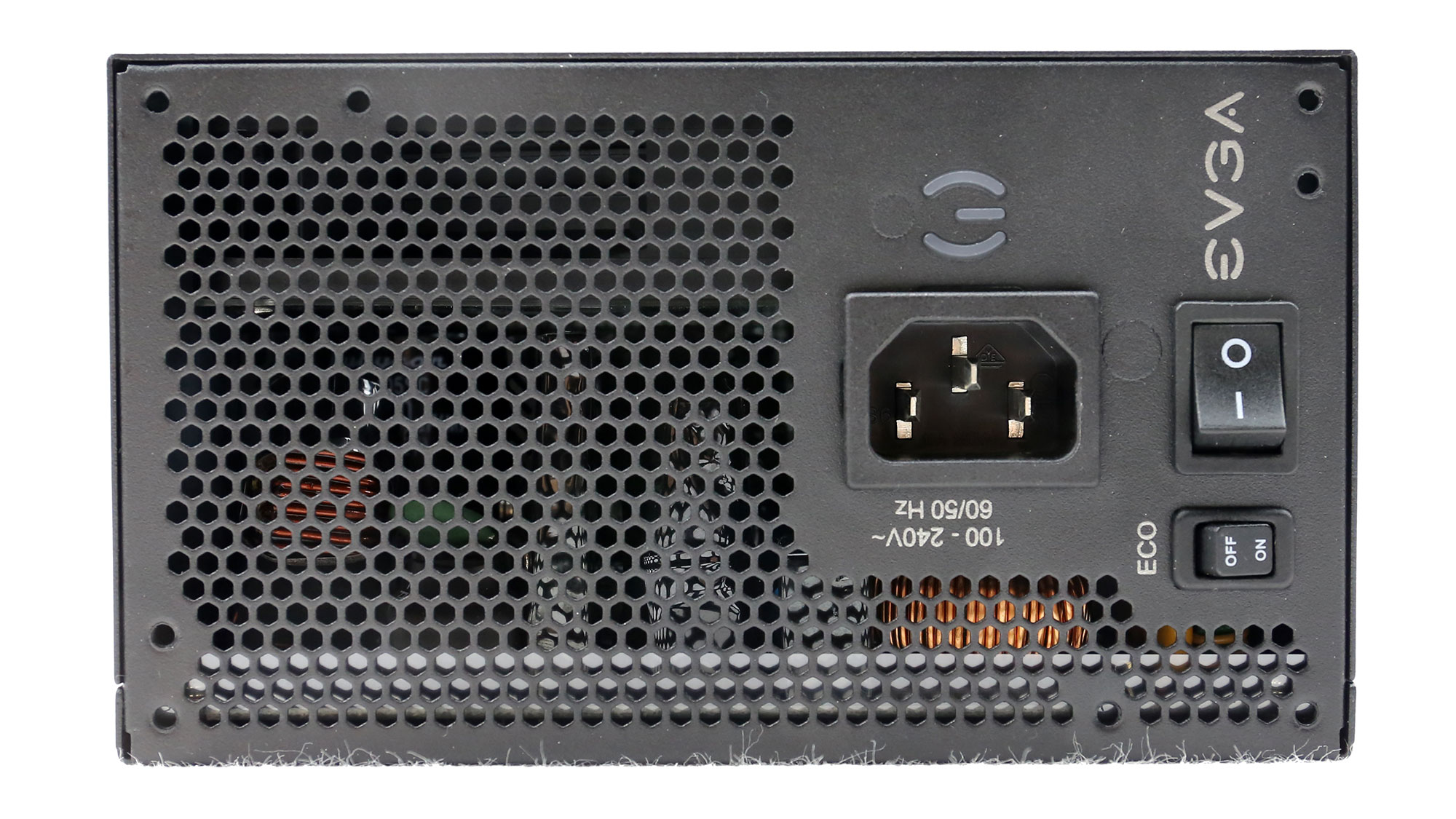
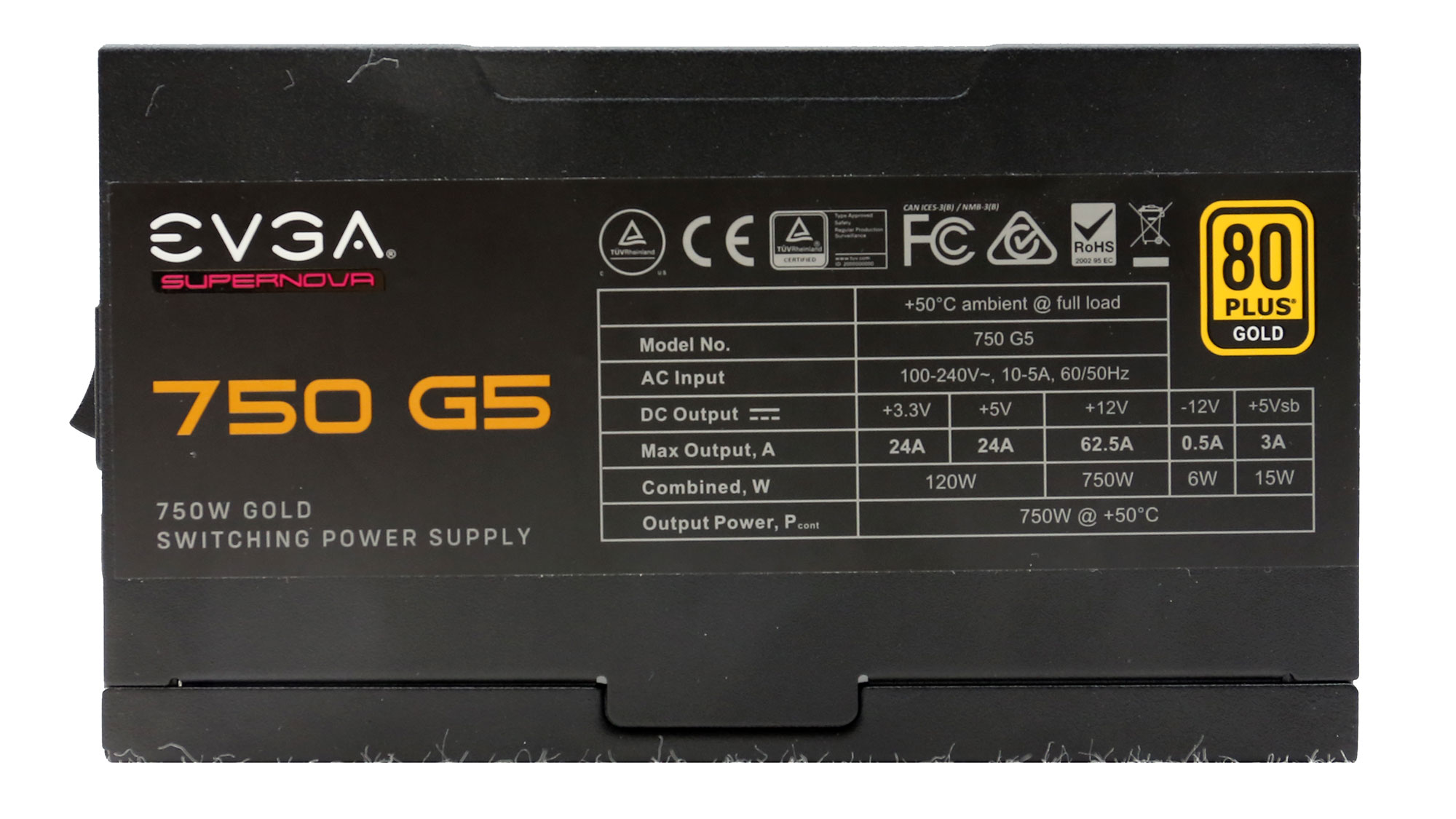
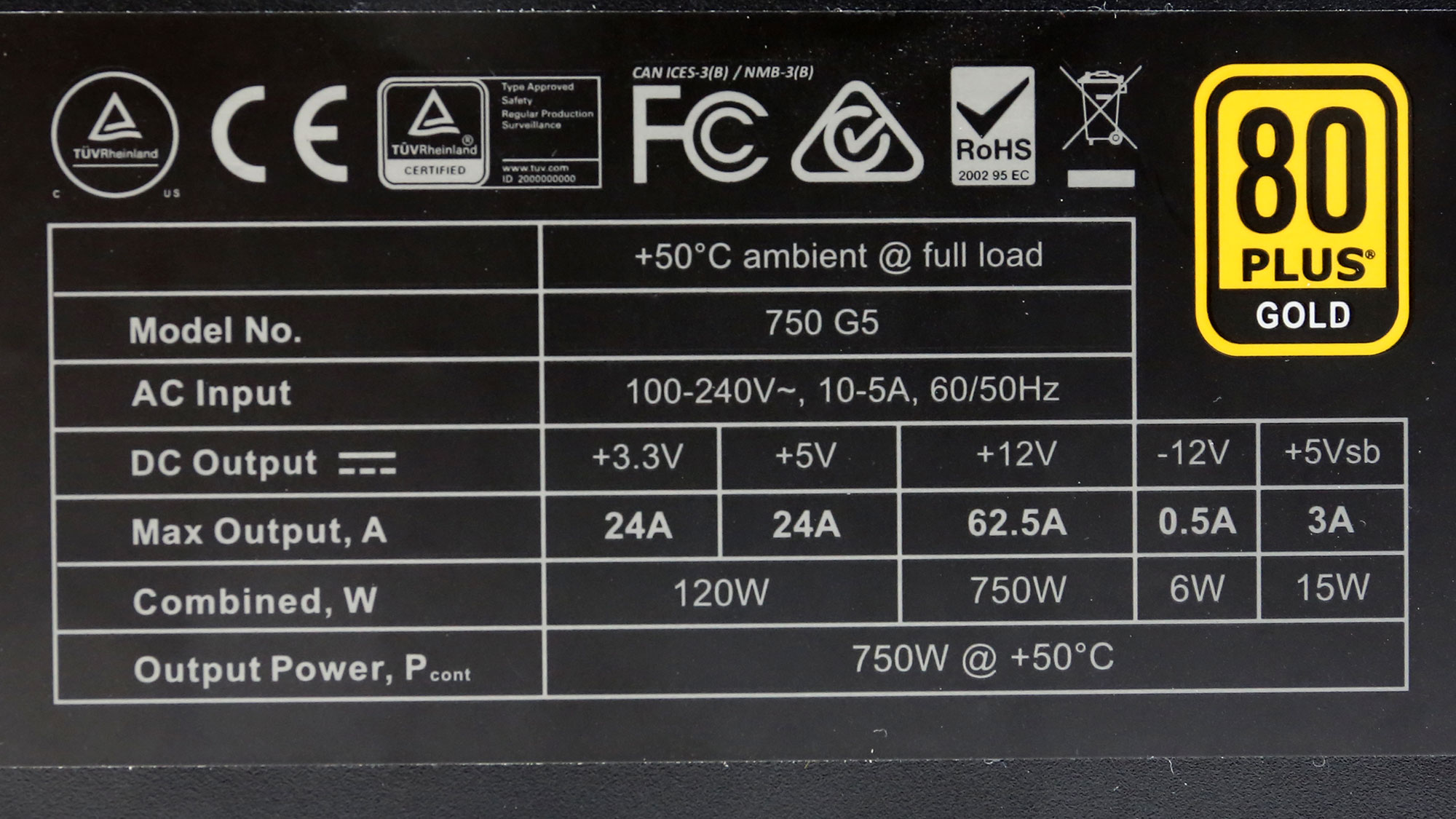

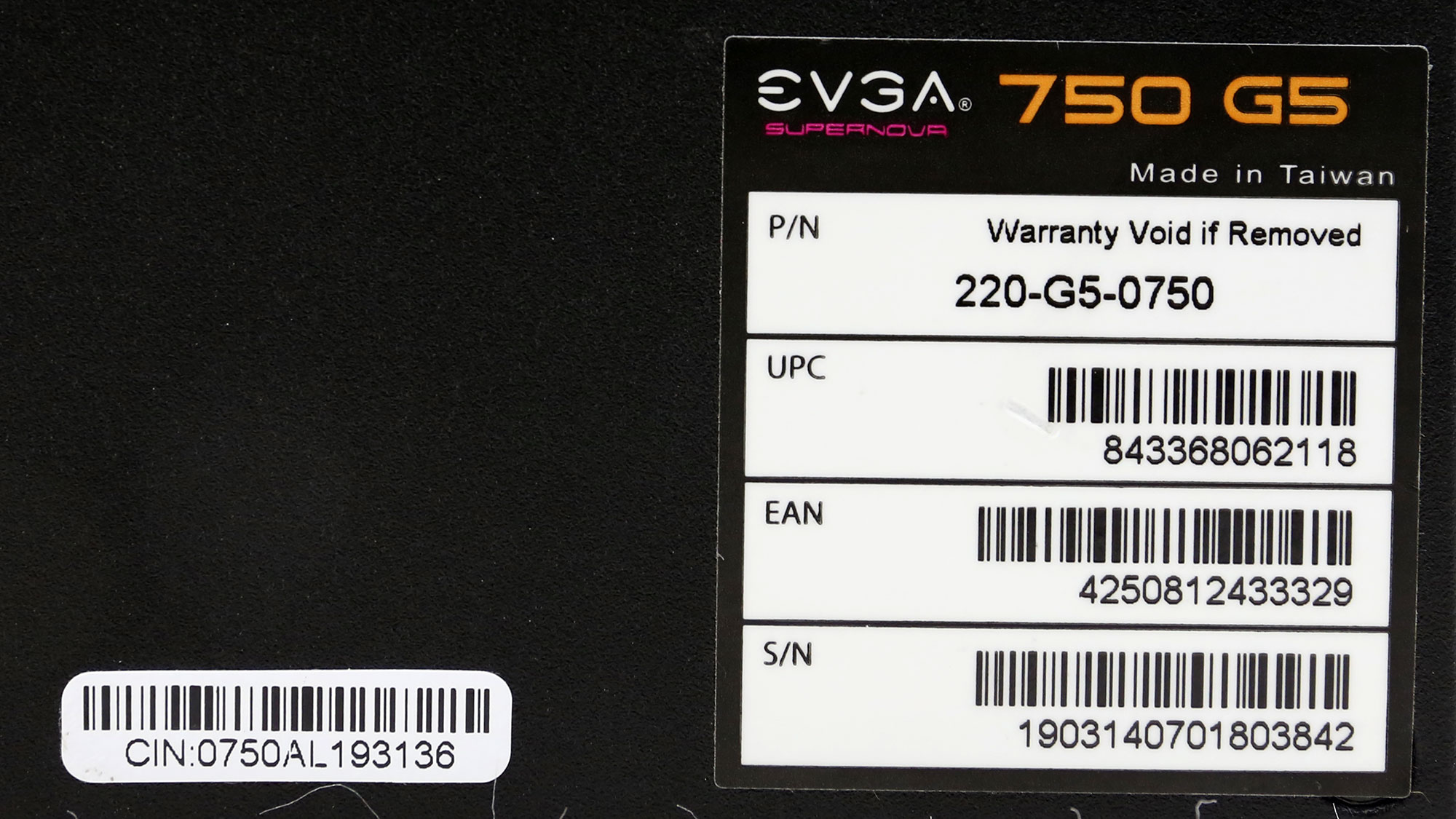

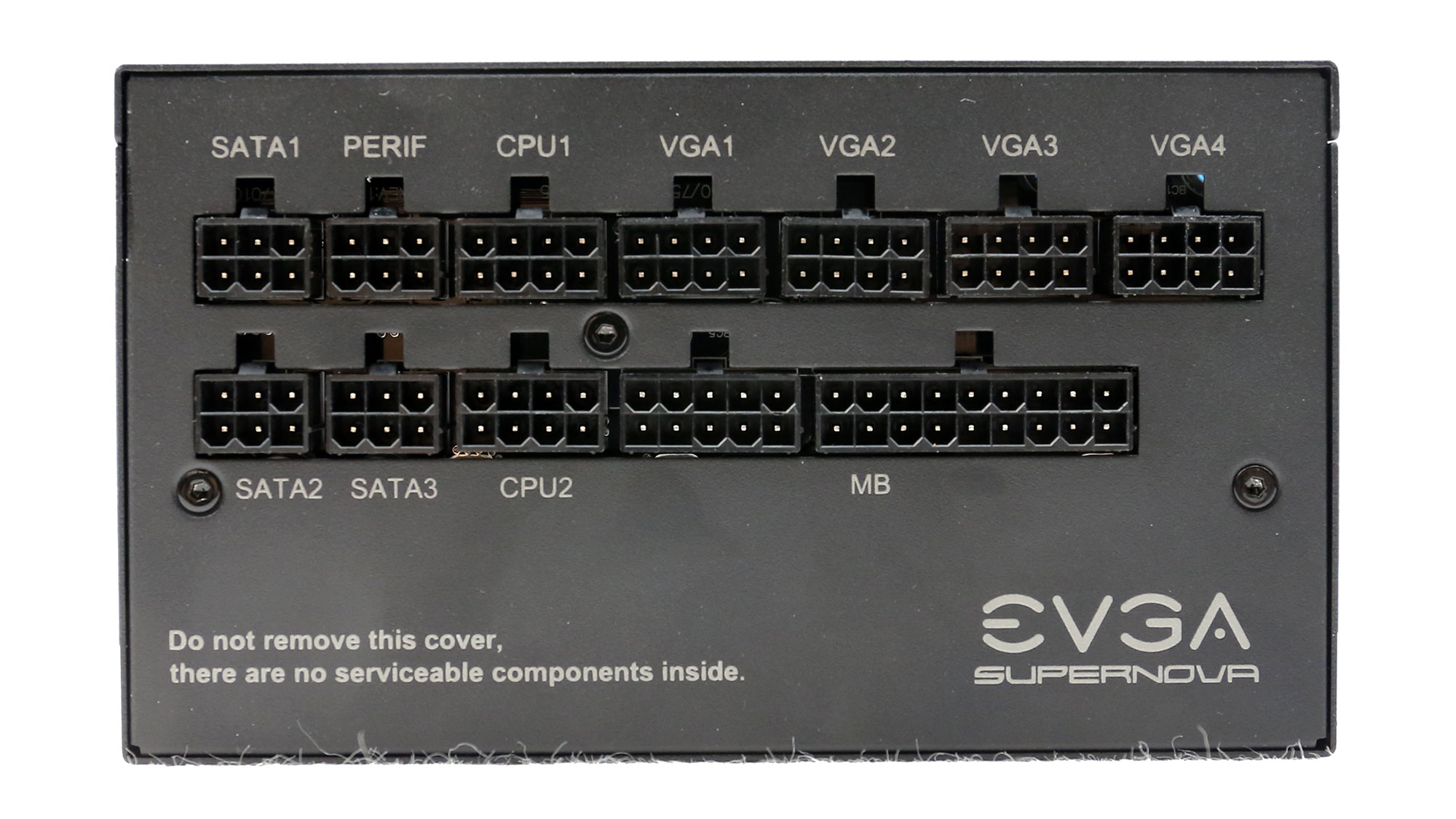
The G5 line is based on an FSP platform, that uses an Active Clamp Reset Forward topology. Briefly this is a budget platform able to deliver long hold-up times even with small bulk caps and high efficiency levels. Still its performance cannot see eye-to-eye half-bridge and full-bridge topologies equipped with LLC resonant converters.
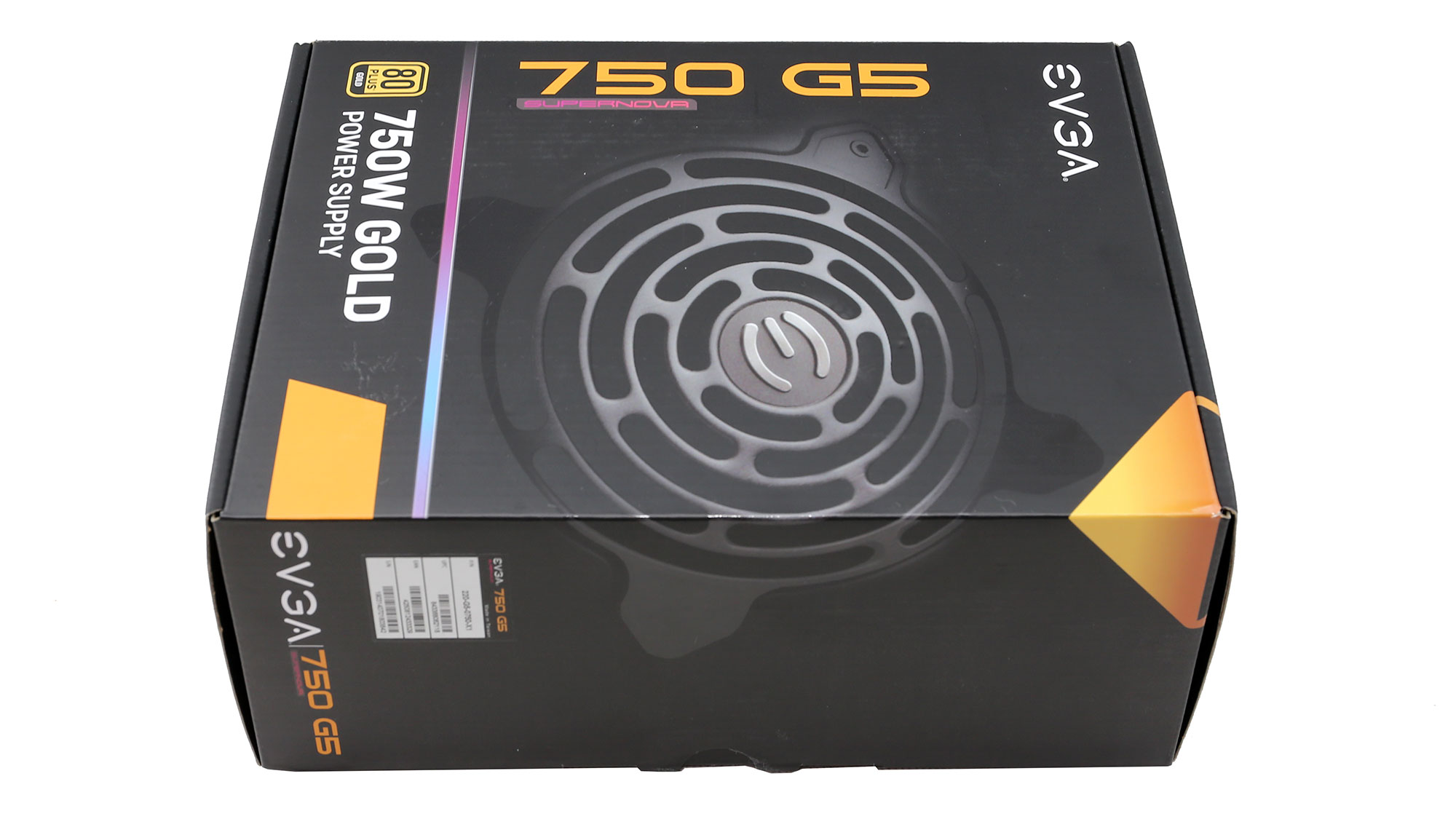
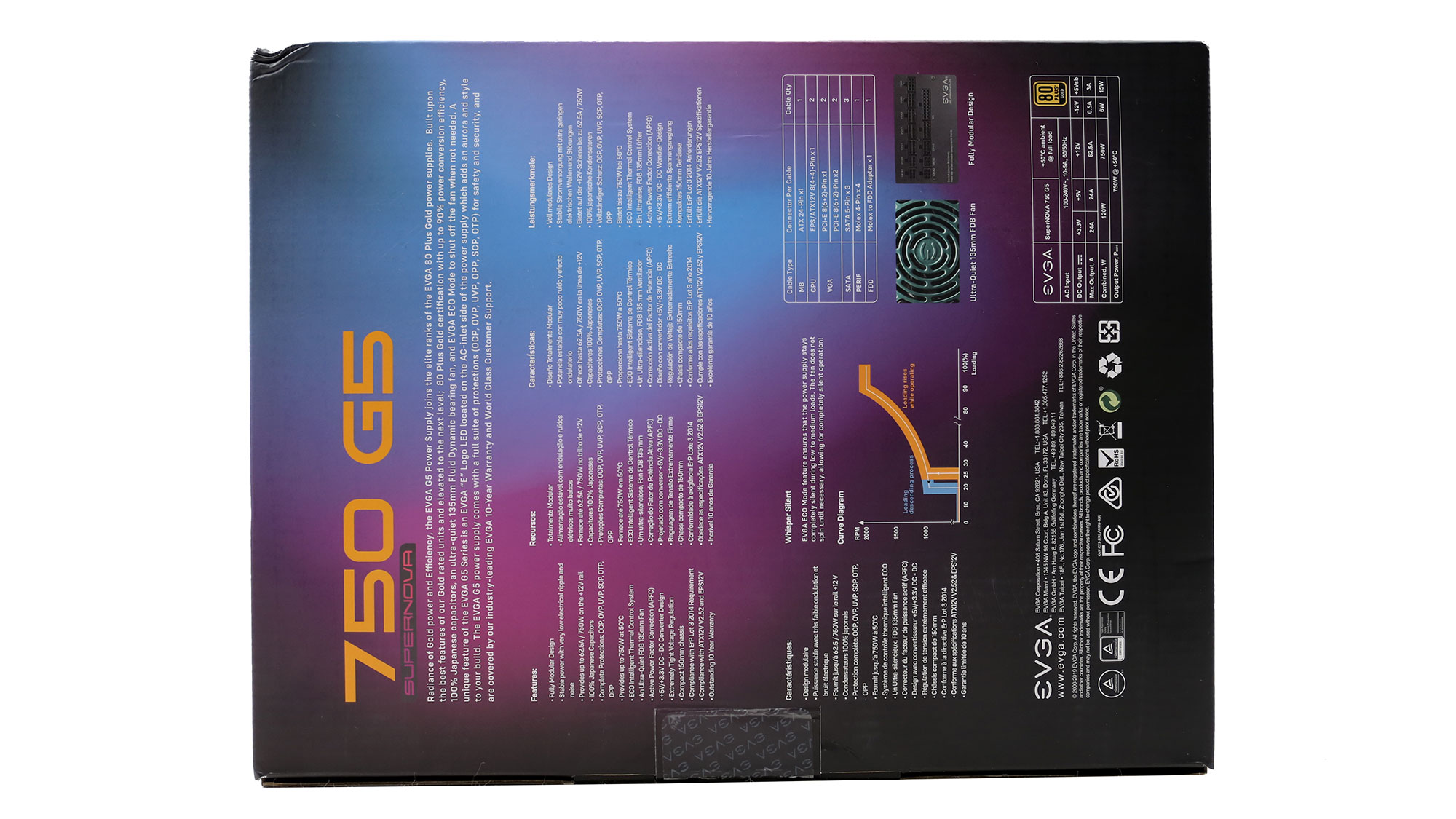


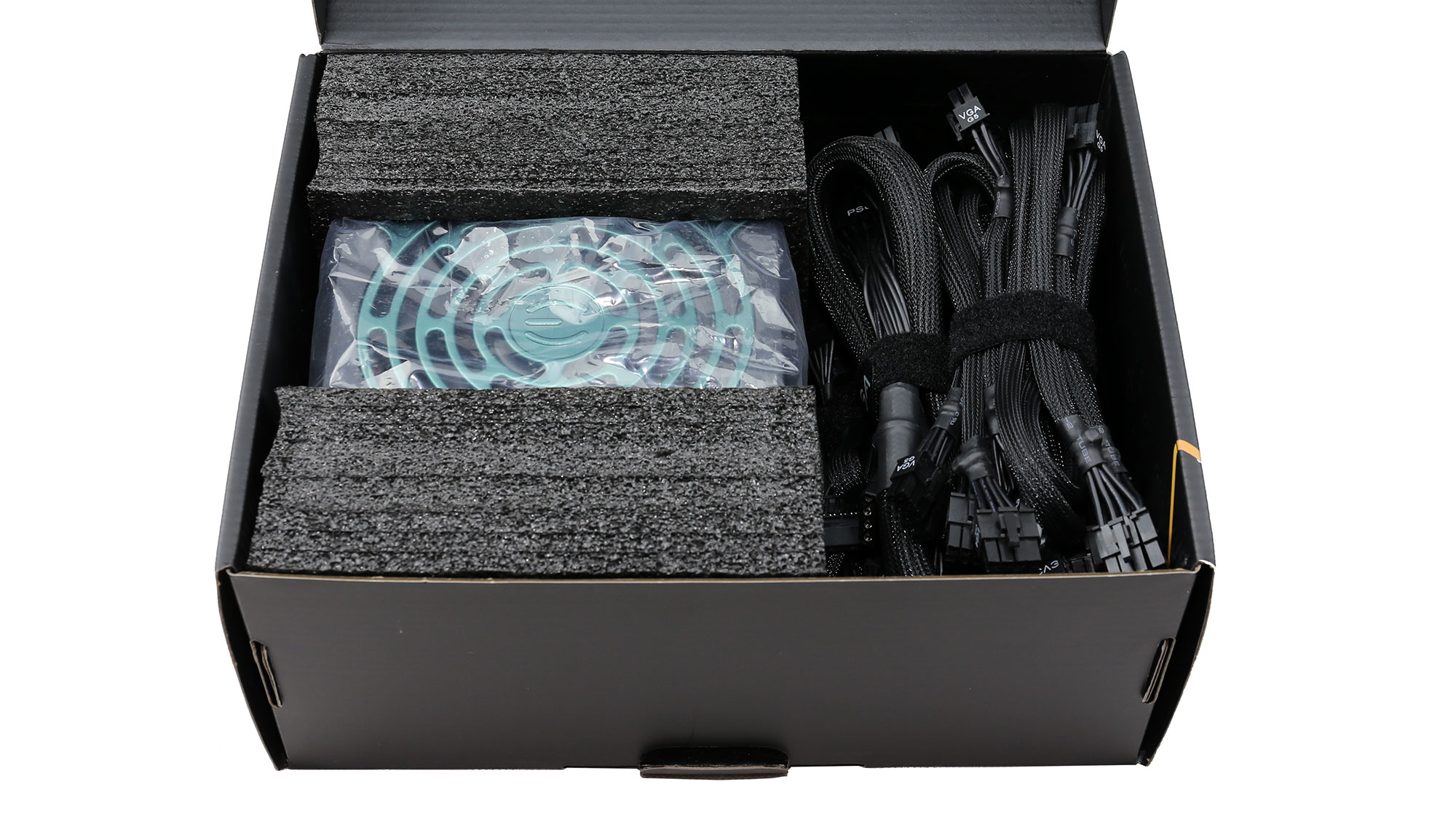

Specifications
| Manufacturer (OEM) | FSP |
|---|---|
| Max. DC Output | 750W |
| Efficiency | 80 PLUS Gold * |
| Noise | LAMBDA-S+ ( 35-40 dB[A]) * |
| Modular | ✓ (Fully) |
| Intel C6/C7 Power State Support | ✓ |
| Operating Temperature (Continuous Full Load) | 0 - 50°C |
| Over Voltage Protection | ✓ |
| Under Voltage Protection | ✓ |
| Over Power Protection | ✓ |
| Over Current (+12V) Protection | ✓ |
| Over Temperature Protection | ✓ |
| Short Circuit Protection | ✓ |
| Surge Protection | ✓ |
| Inrush Current Protection | ✓ |
| Fan Failure Protection | ✗ |
| No Load Operation | ✓ |
| Cooling | 135mm Fluid Dynamic Bearing Fan (MGA13512HF-A25) |
| Semi-Passive Operation | ✓ (Selectable) |
| Dimensions (W x H x D) | 150 x 85 x 150mm |
| Weight | 1.63 kg (3.59 lb) |
| Form Factor | ATX12V v2.4, EPS 2.92 |
| Warranty | 10 Years |
* Not certified yet by Cybenetics. According to our measurements the PSU falls into this noise category. There is no efficiency (ETA) classification, because of the high vampire power which puts it off Cybenetics' charts.
Power Specifications
| Rail | 3.3V | 5V | 12V | 5VSB | -12V | |
|---|---|---|---|---|---|---|
| Max. Power | Amps | 24 | 24 | 62.5 | 3 | 0.5 |
| Watts | 120 | 750 | 15 | 6 | ||
| Total Max. Power (W) | 750 |
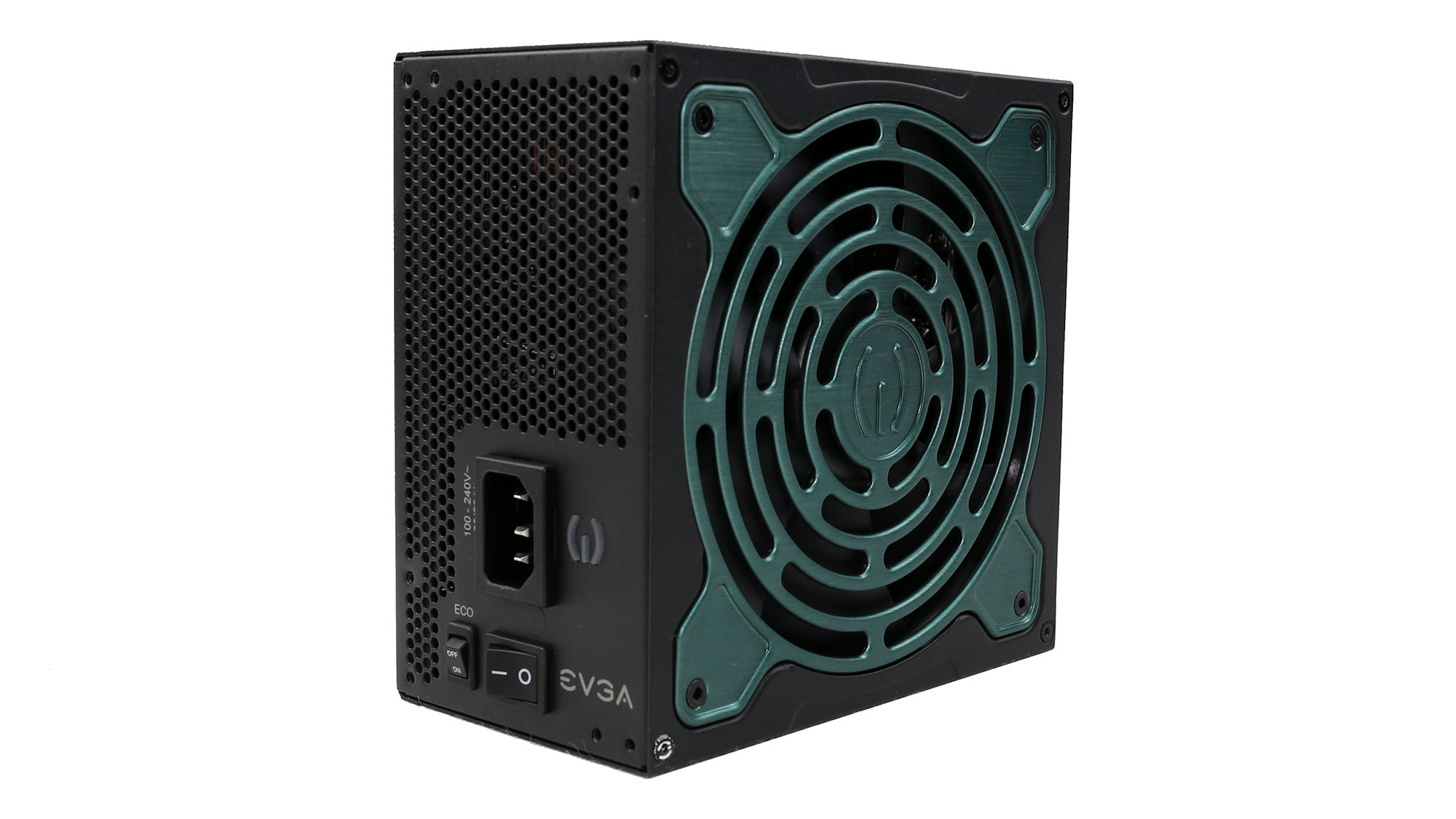
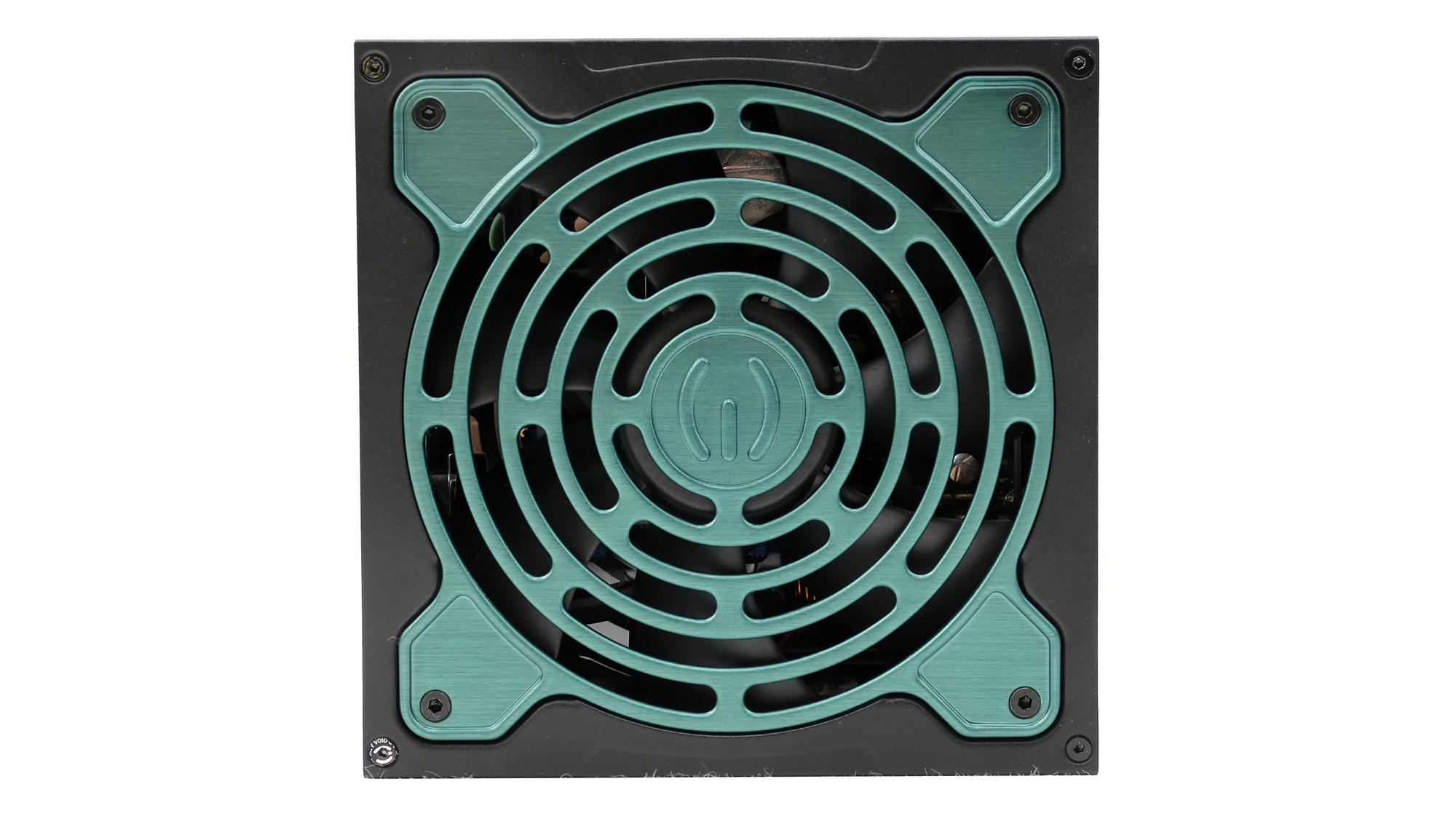


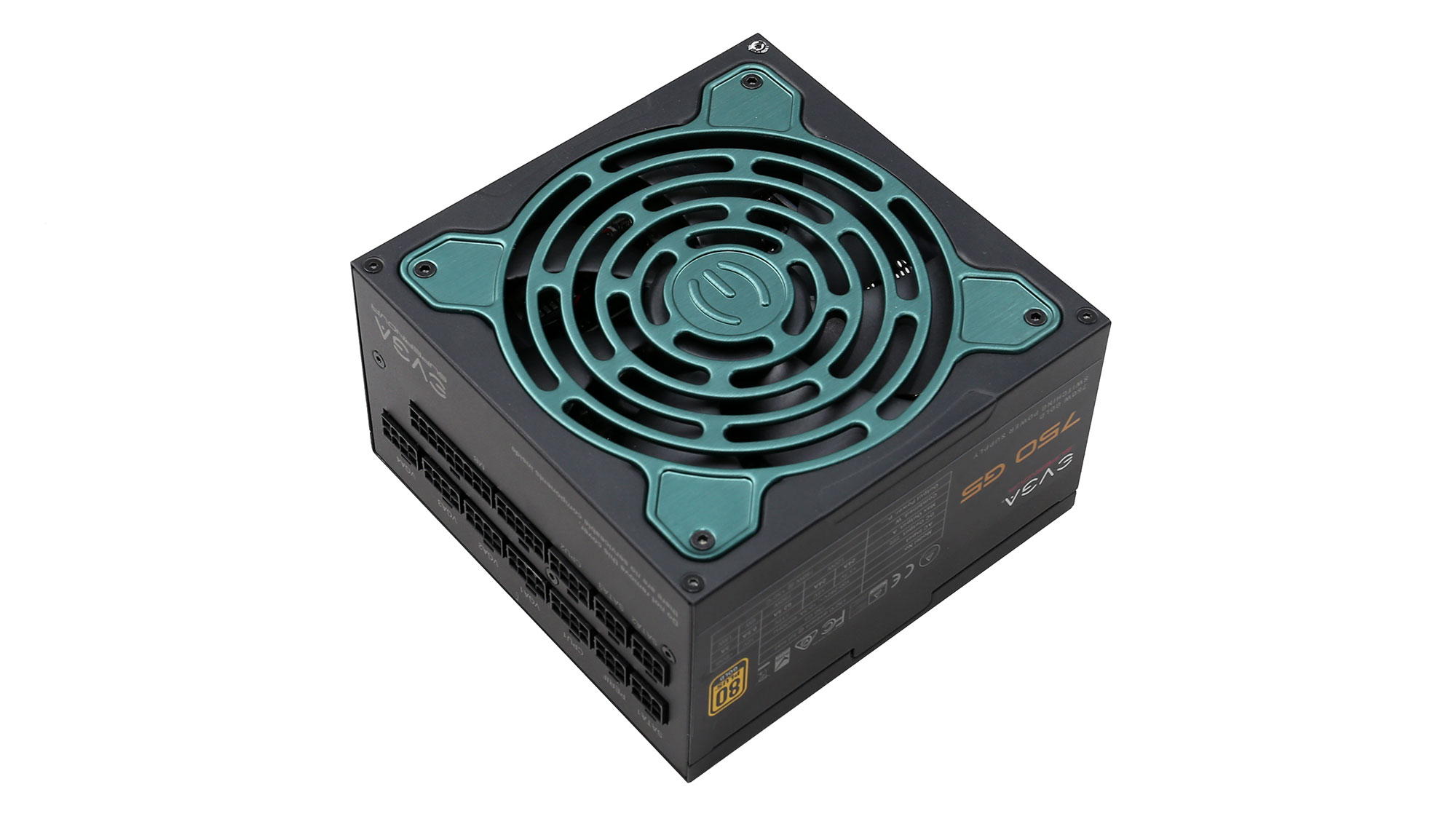
Cables & Connectors
| Modular Cables | ||||
|---|---|---|---|---|
| Description | Cable Count | Connector Count (Total) | Gauge | In Cable Capacitors |
| ATX connector 20+4 pin (600mm) | 1 | 1 | 18-22AWG | No |
| 4+4 pin EPS12V (700mm) | 2 | 2 | 18AWG | No |
| 6+2 pin PCIe (700mm) | 2 | 2 | 18AWG | No |
| 6+2 pin PCIe (700mm+150mm) | 2 | 4 | 18AWG | No |
| SATA (550mm+100mm+100mm) | 3 | 9 | 18AWG | No |
| 4-pin Molex (550mm+100mm+100mm+100mm) | 1 | 4 | 18AWG | No |
| FDD Adapter (100mm) | 1 | 1 | 22AWG | No |
| AC Power Cord (1420mm) - C13 coupler | 1 | 1 | 18AWG | - |
Plenty of cables and connectors are provided with the 750 G3. It would be nice if the EPS and PCIe connectors used thicker, 16AWG gauges, but this is not a super strong PSU, so we will let this slide. What we cannot let go, though, is the small distance between the peripheral connectors. With only 100mm you will probably fall into compatibility problems with larger chassis. This is why we recommend at least 150mm gap between the SATA and the 4-pin Molex connectors. Finally, the absence of in-cable caps is good news, since it creates a trouble-free cable routing and management processes.
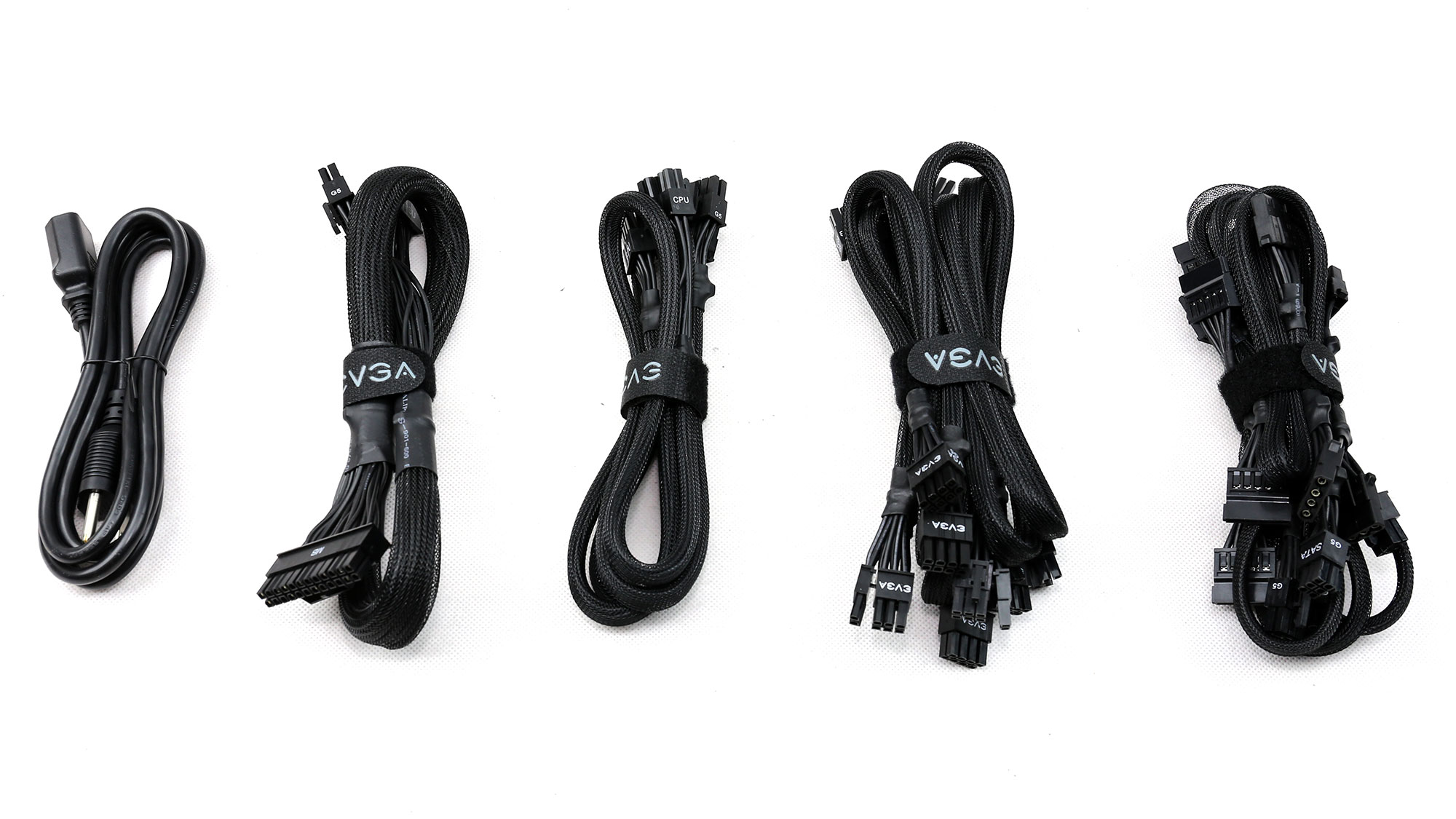
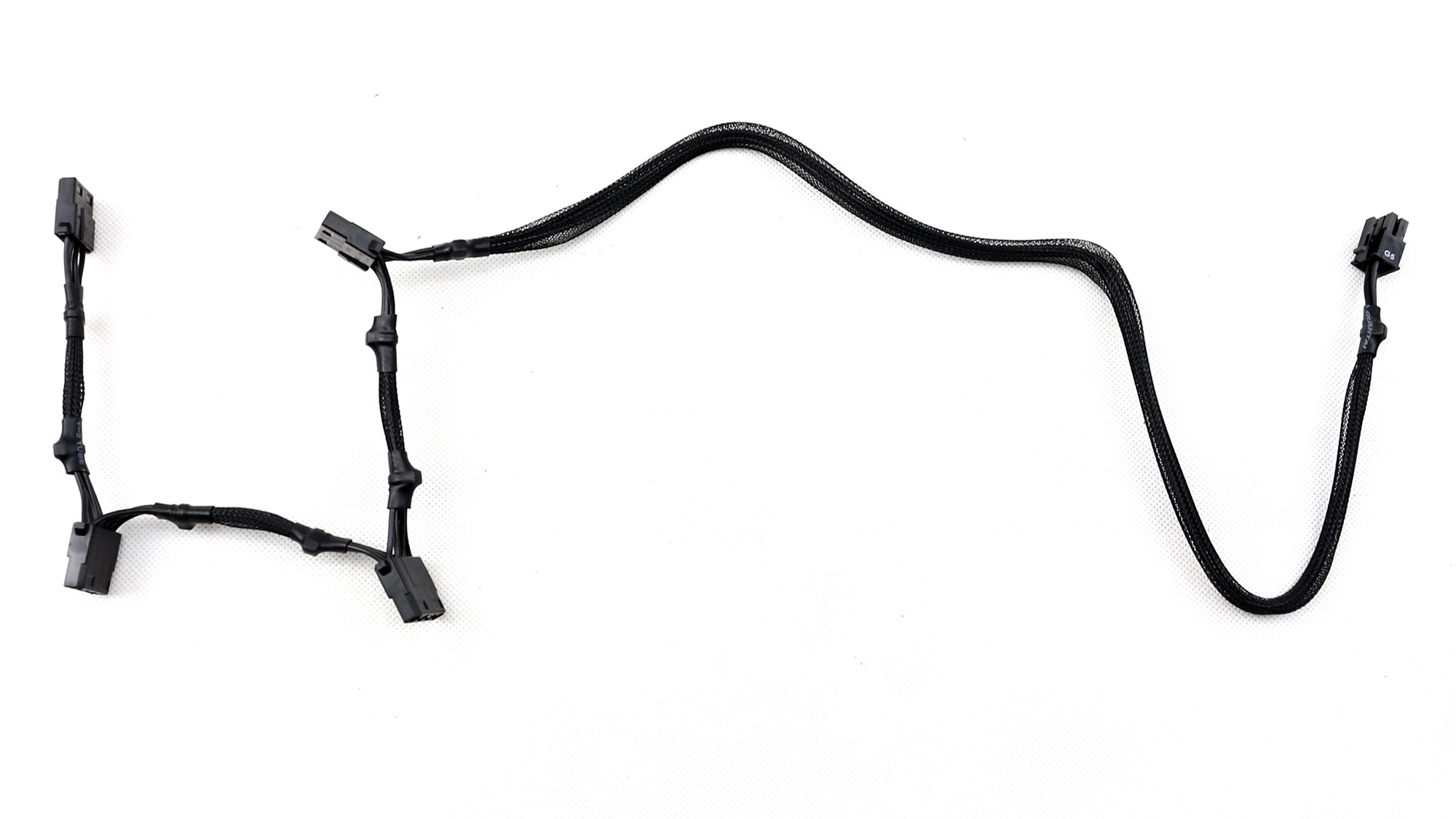
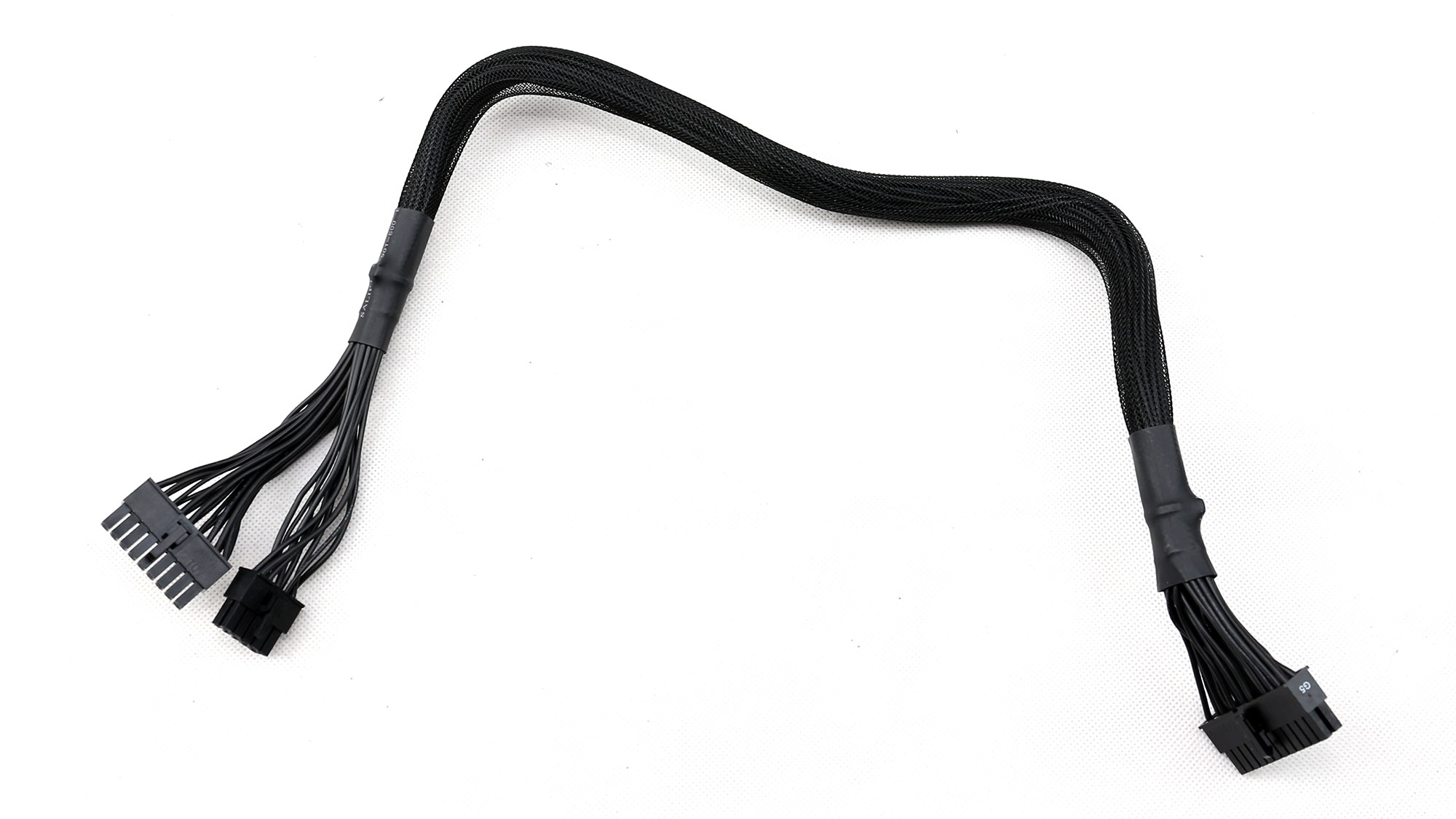
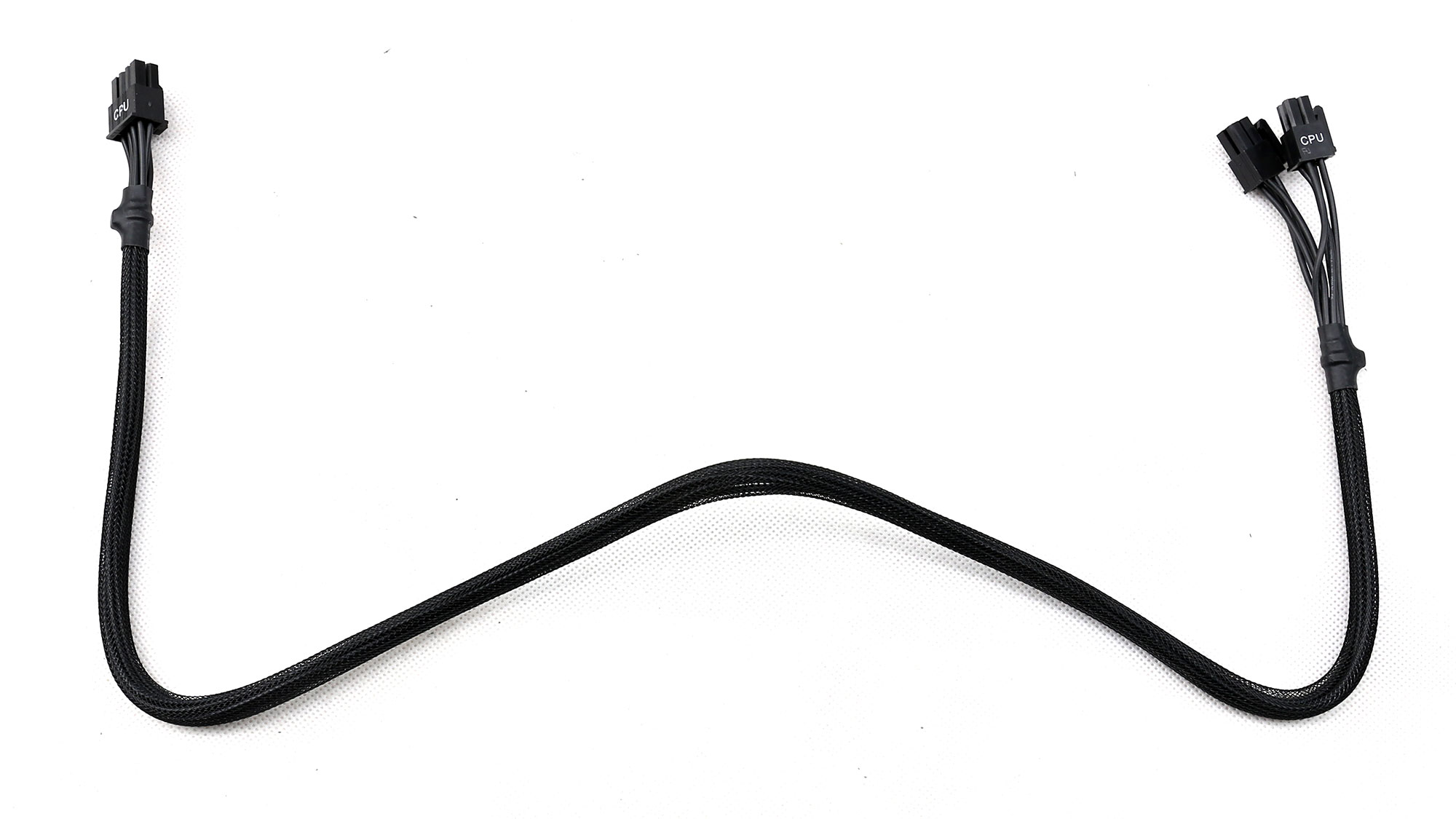
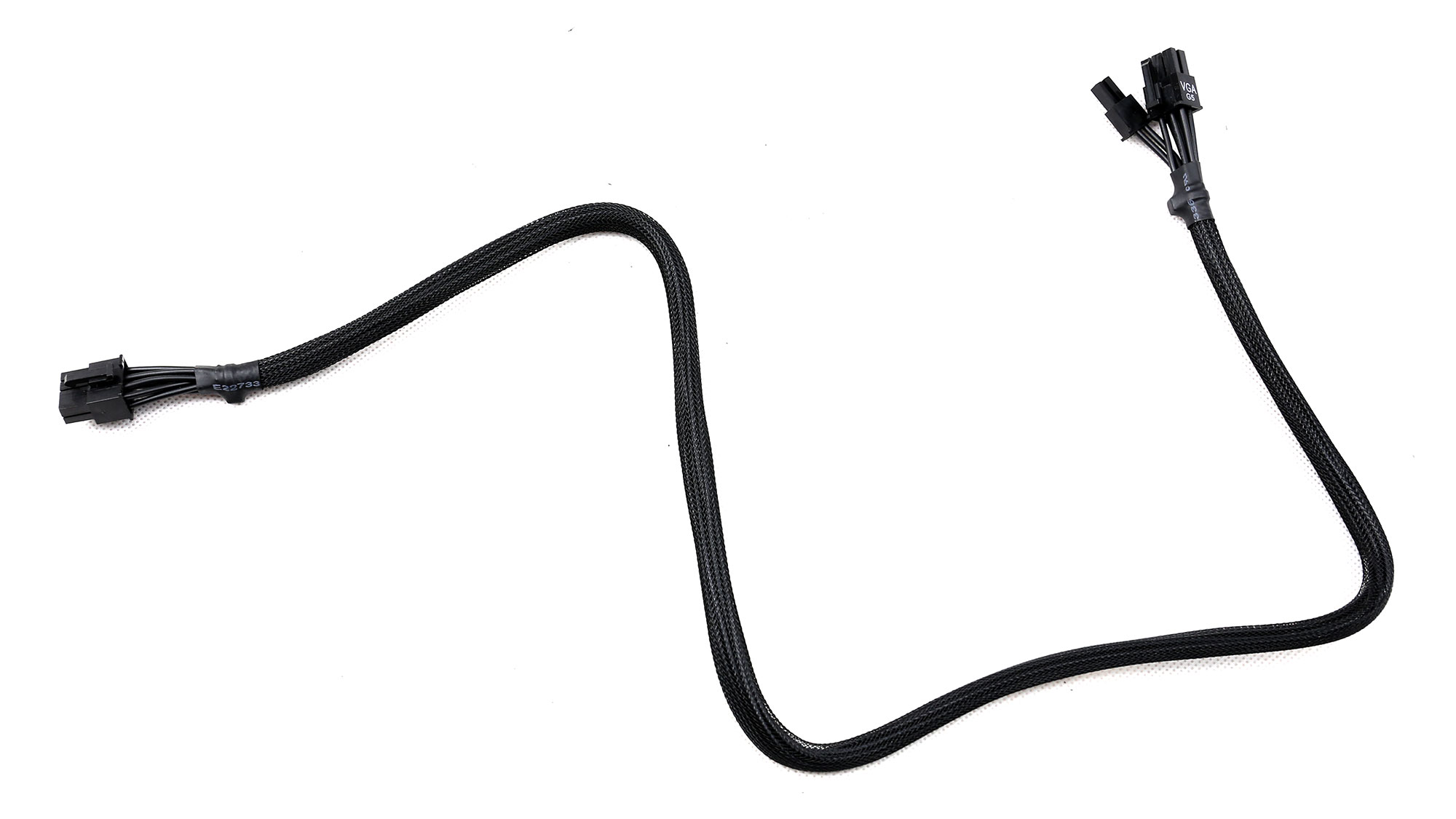
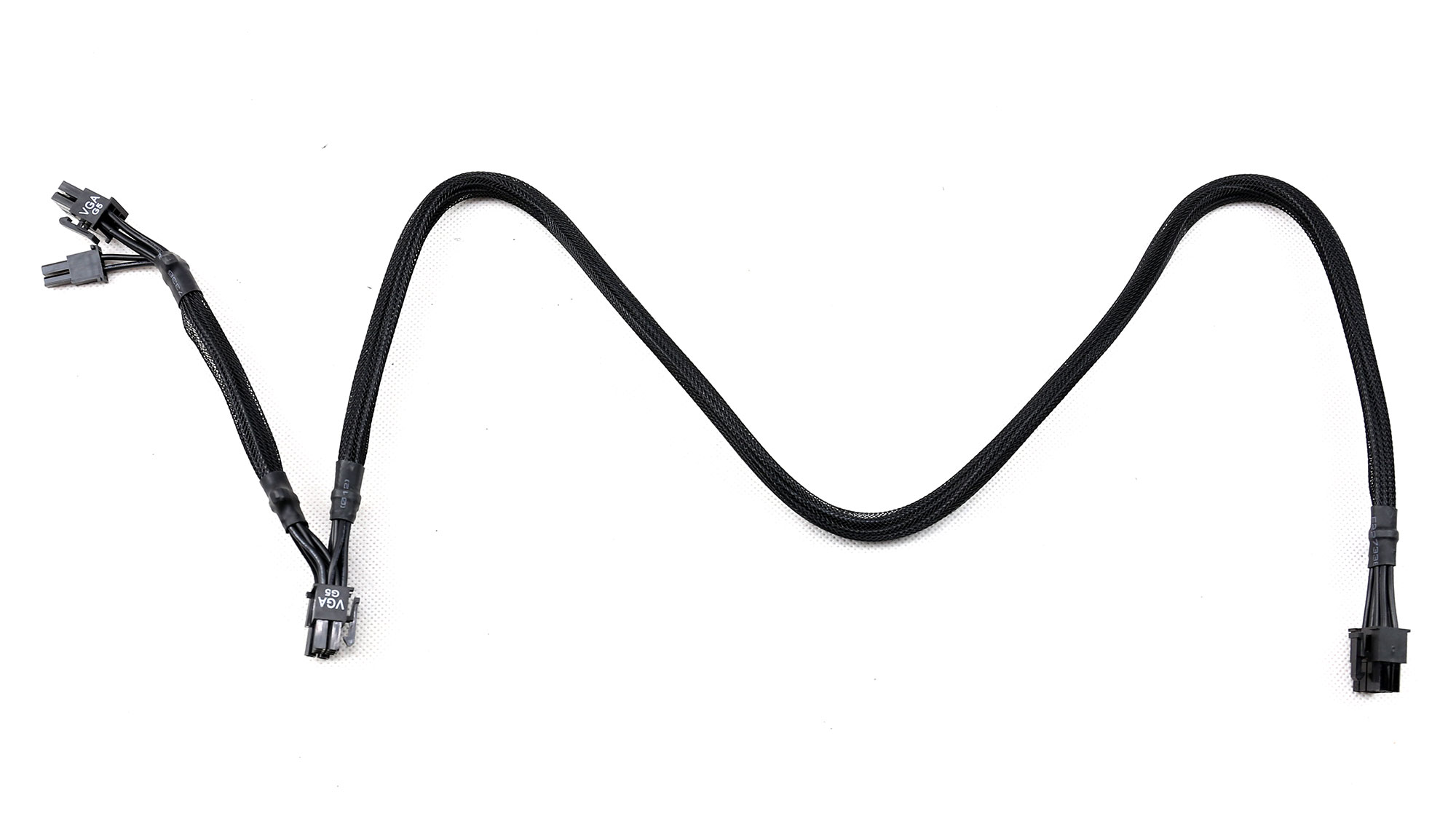



Component Analysis
We strongly encourage you to have a look at our PSUs 101 article, which provides valuable information about PSUs and their operation, allowing you to better understand the components we're about to discuss.
| General Data | |
|---|---|
| Manufacturer (OEM) | FSP |
| PCB Type | Double Sided |
| Primary Side | |
| Transient Filter | 4x Y caps, 2x X caps, 3x CM chokes, 1x MOV |
| Inrush Protection | NTC Thermistor & Relay |
| Bridge Rectifier(s) | 1x HY GBJ2506P (600V, 25A @ 100°C) |
| APFC MOSFETS | 2x ROHM R6020KNX (600V, 20A, 0.196Ohm) |
| APFC Boost Diode | 1x ROHM SCS306AM (650V, 6A @ 120°C) |
| Hold-up Cap(s) | 1x Rubycon (450V, 390uF, 3,000h @ 105°C, MXG) |
| Main Switchers | 1x Infineon IPA80R310CE (800V, 10.6A @ 100°C, 0.31Ohm) |
| Reset Switch | 1x Infineon IPD80R1K4CE (800V, 2.3A @ 100°C, 1.4Ohm) |
| APFC/Switching Controller | FSP 6600 IC |
| Topology | Primary side: Active Clamp Reset Forward Secondary side: Synchronous Rectification & DC-DC converters |
| Secondary Side | |
| +12V MOSFETS | 4x Infineon IPP029N06N (60V, 100A @ 100°C, 2.9mOhm) |
| 5V & 3.3V | DC-DC Converters:4x Infineon BSC042N03LS (30V, 59A @ 100°C, 4.2mOhm) PWM Controllers: ANPEC APW7159C |
| Filtering Capacitors | Electrolytics: 2x Nippon Chemi-Con (1-5,000 @ 105°C, KZE), 2x Rubycon (3-6,000 @ 105°C, YXG), 1x Rubycon (4-10,000 @ 105°C, YXF) Polymers: 15x United Chemi-Con |
| Supervisor IC | Weltrend WT7527 (OCP, OVP, UVP, SCP, PG) |
| Fan Model | Protechnic Electric MGA13512HF-A25 (135mm, 12V, 0.28A, Fluid Dynamic Bearing Fan) |
| 5VSB Circuit | |
| Rectifier | 1x CET CEF02N7G FET (700V, 1.3A @ 100°C, 6.75Ohm) |
| Standby PWM Controller | FSP 6601 IC |

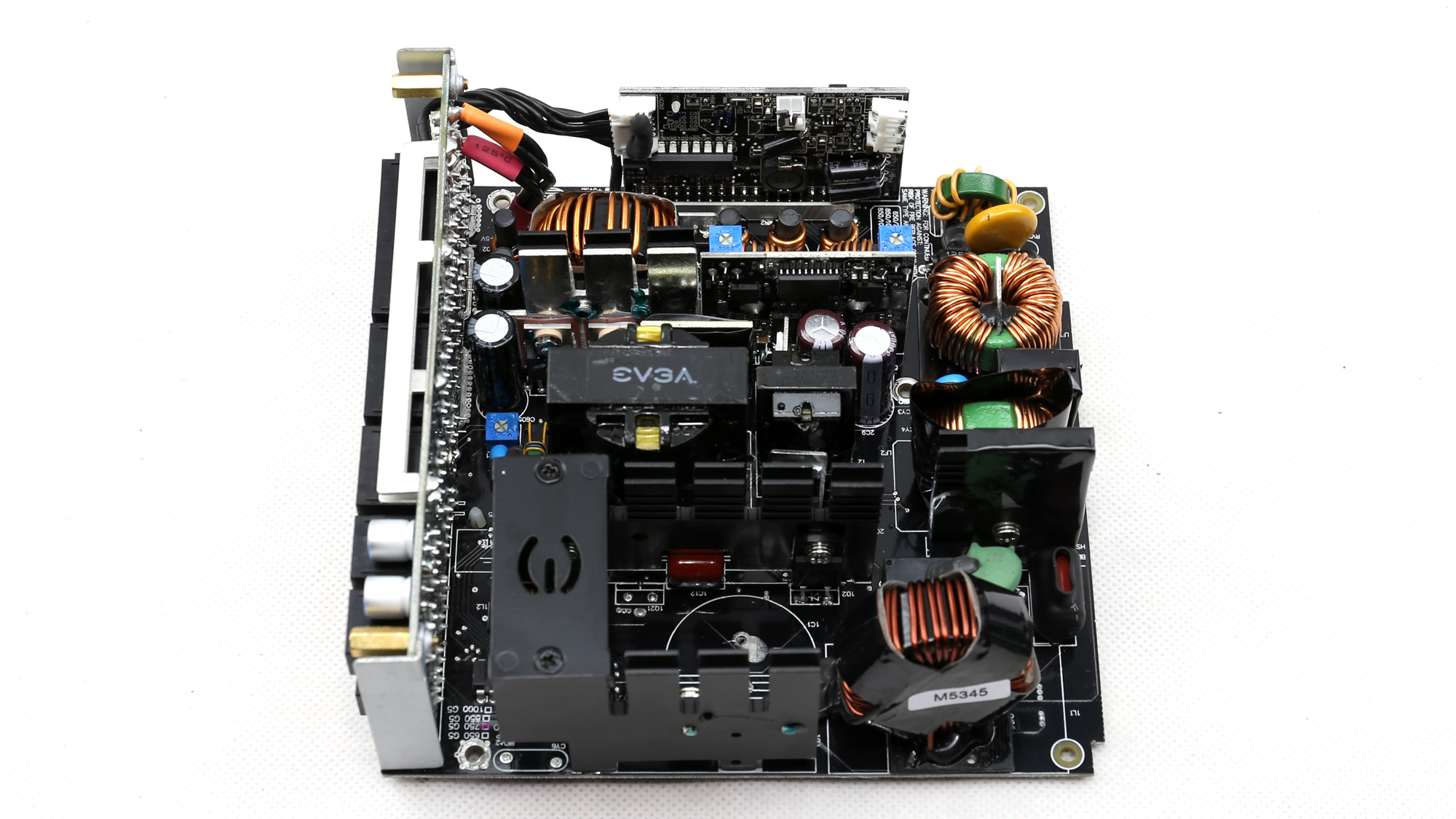
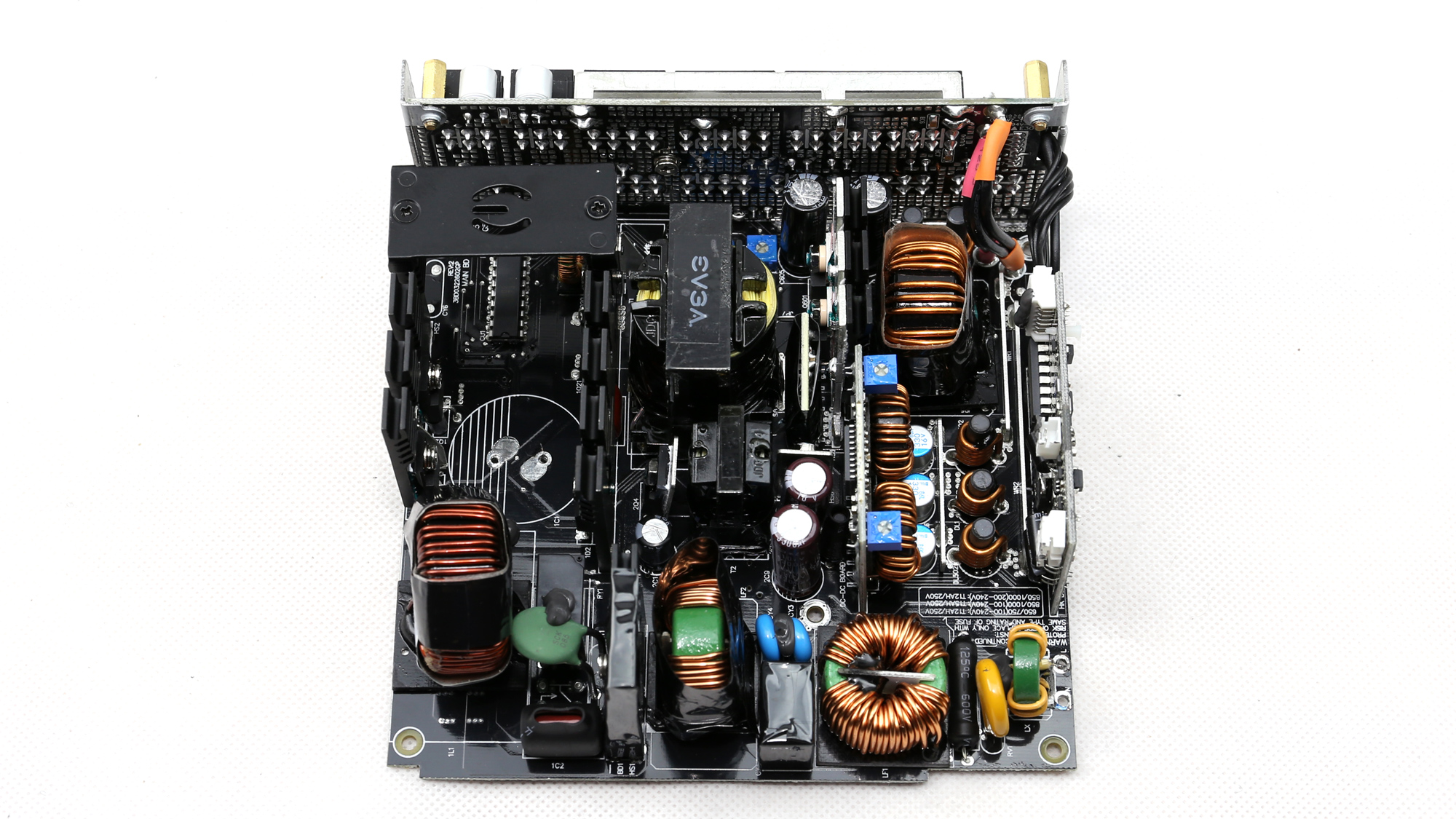
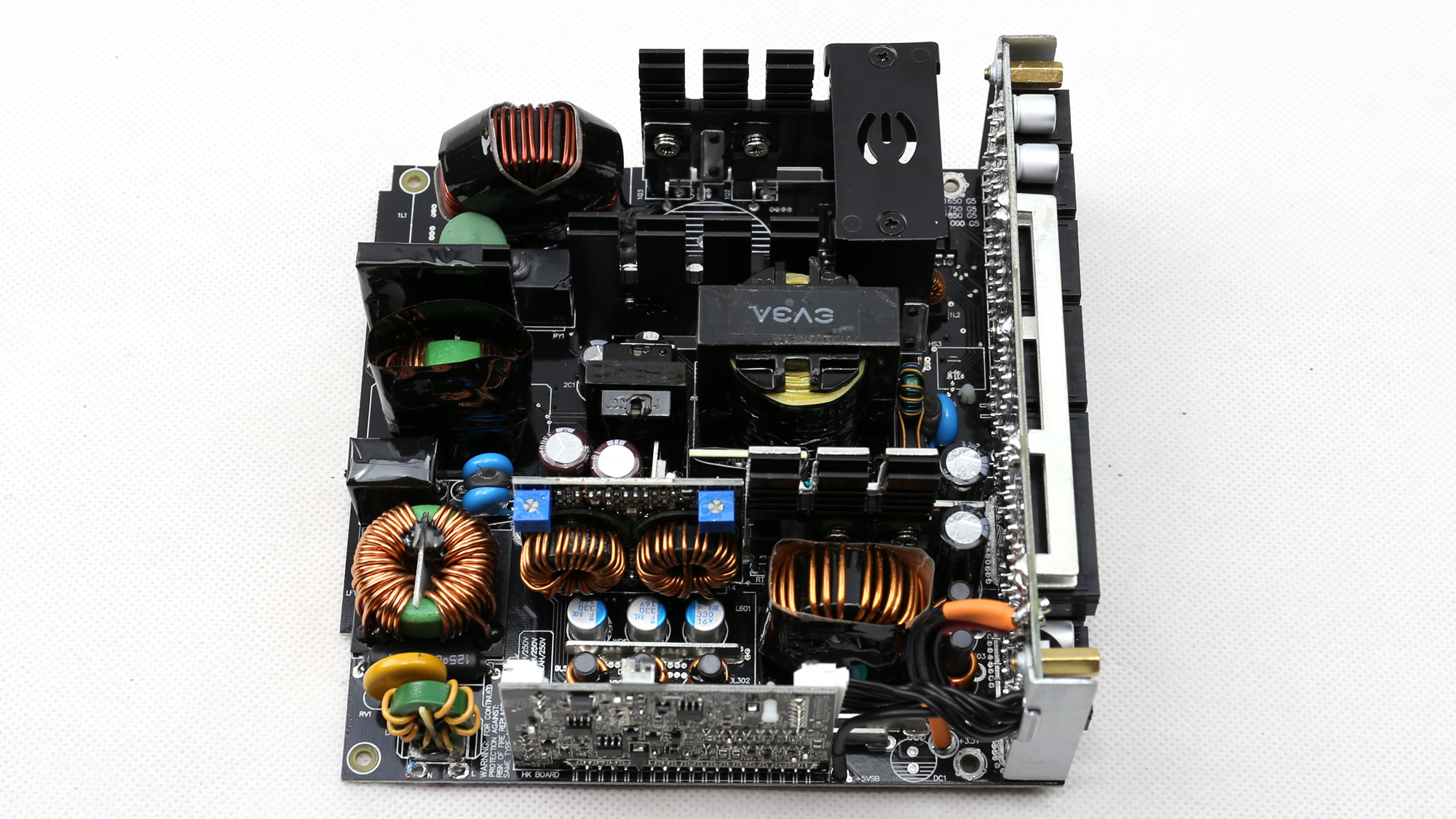
On the primary side, an ACRF (Active Clamp Reset Forward) topology is used with a single FET being the main switcher, while another FET plays the role of the reset switch. On the secondary side, a synchronous rectification scheme is used by the +12V rail, and the minor rails are generated through a pair of DC-DC converters. All heatsinks are small, and there is a strange bridge connecting the APFC and the primary heat sinks, which is mostly for aesthetics rather than doing something of importance (e.g., balancing the operating temperatures of those heat sinks). Finally, the overall design is clear, so the airflow is increased, and on the secondary side, there aren't many electrolytic caps; on the contrary, FSP used many polymer caps to filter ripple.
Get Tom's Hardware's best news and in-depth reviews, straight to your inbox.
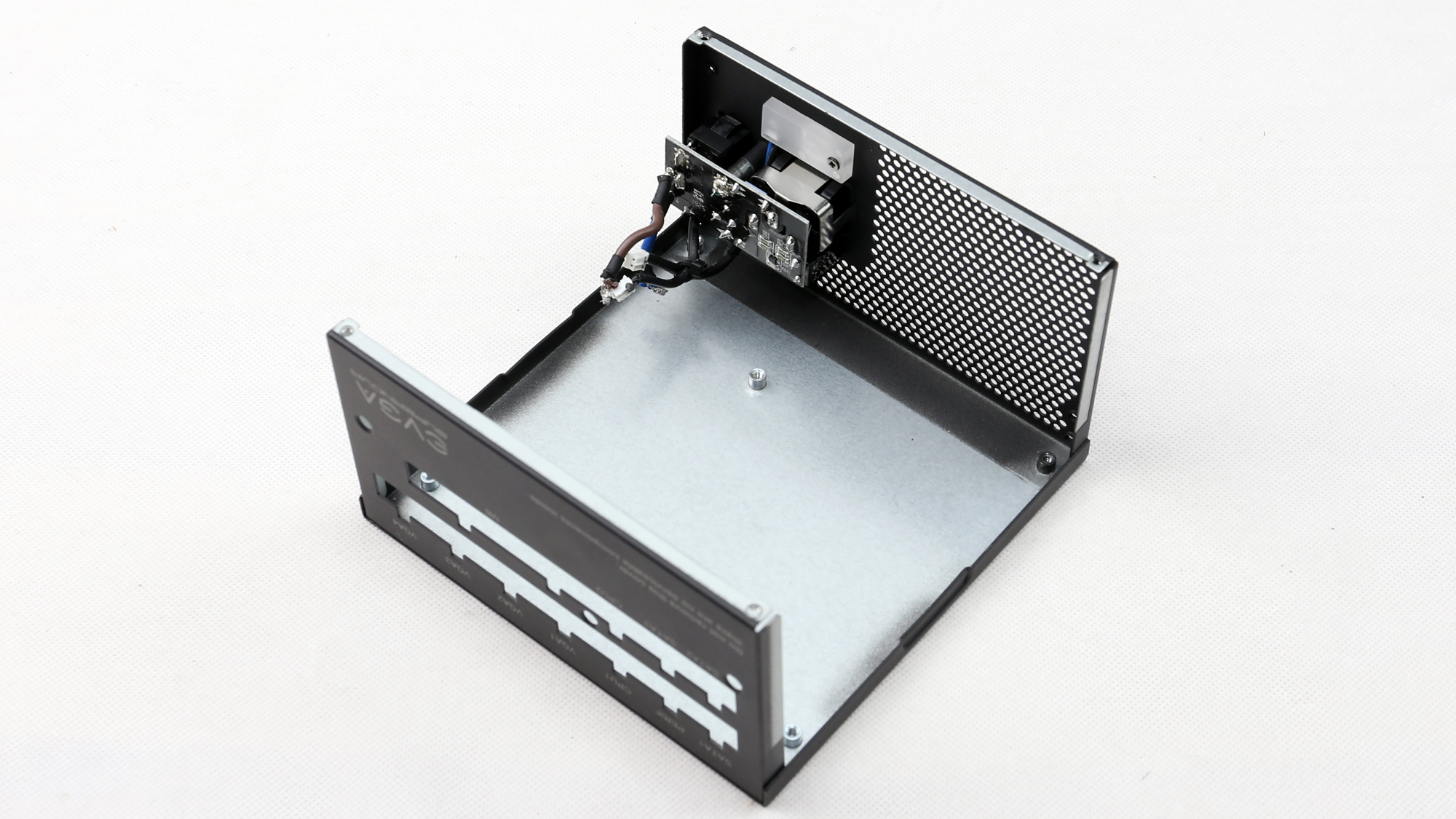
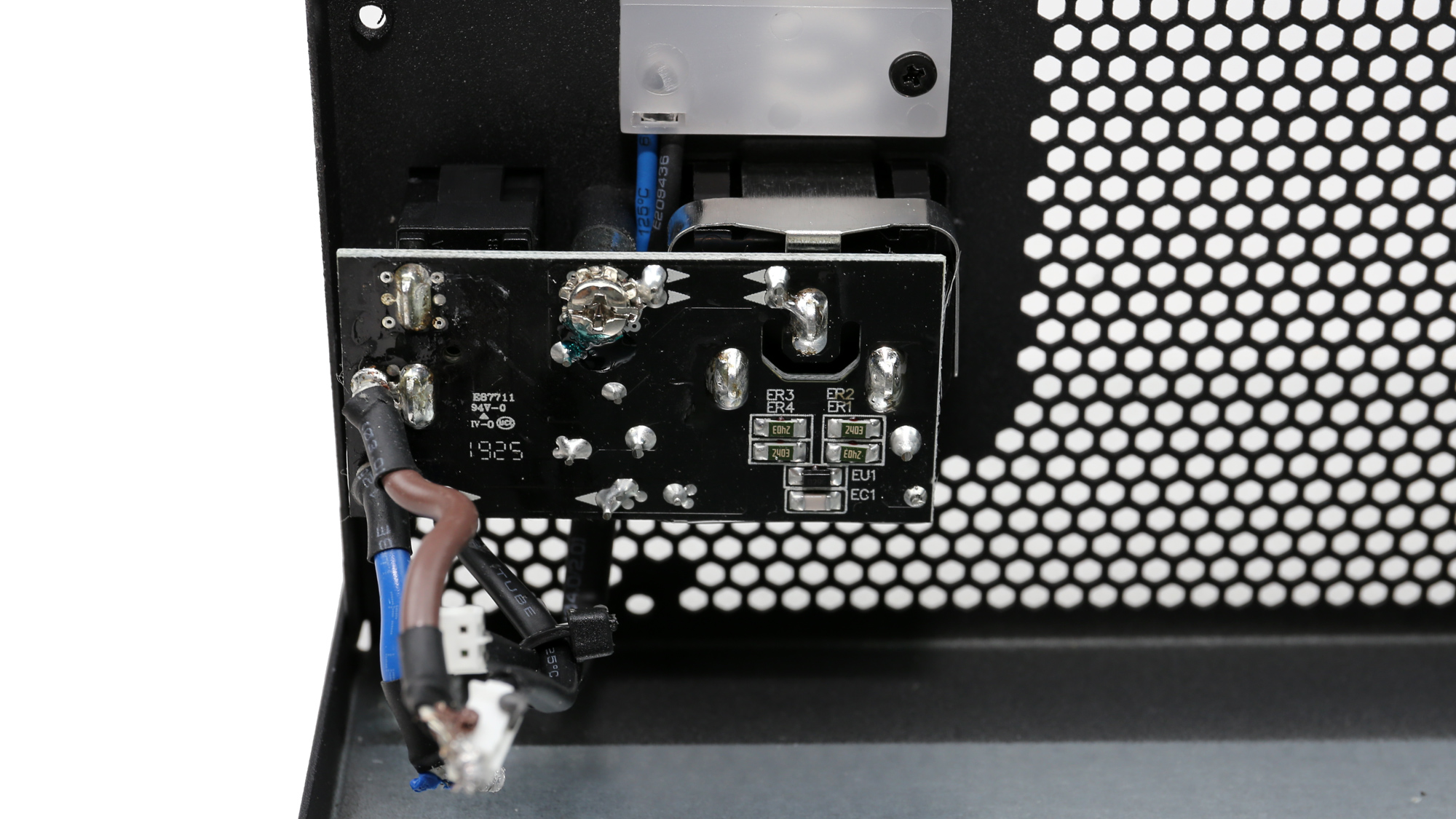

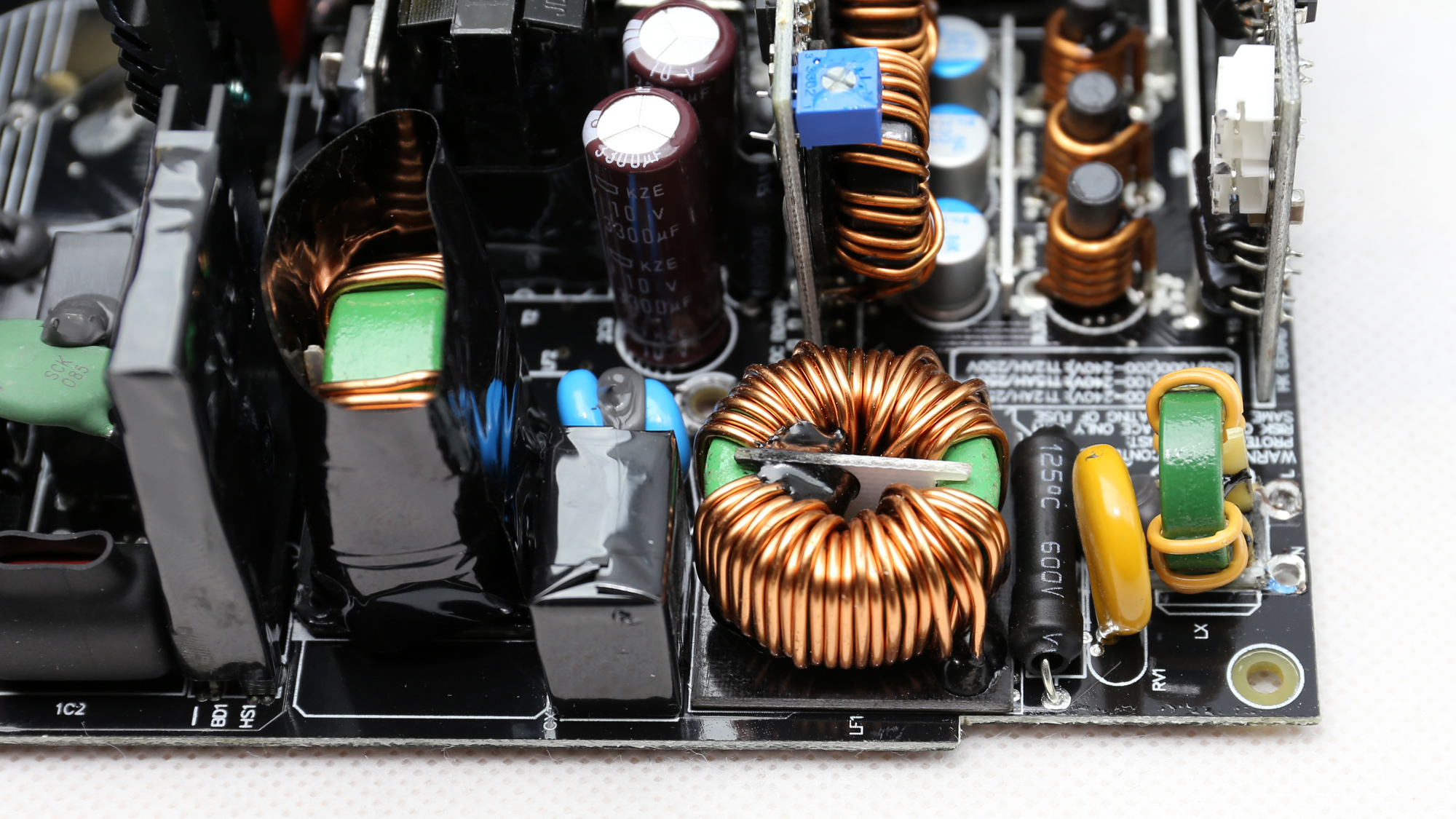
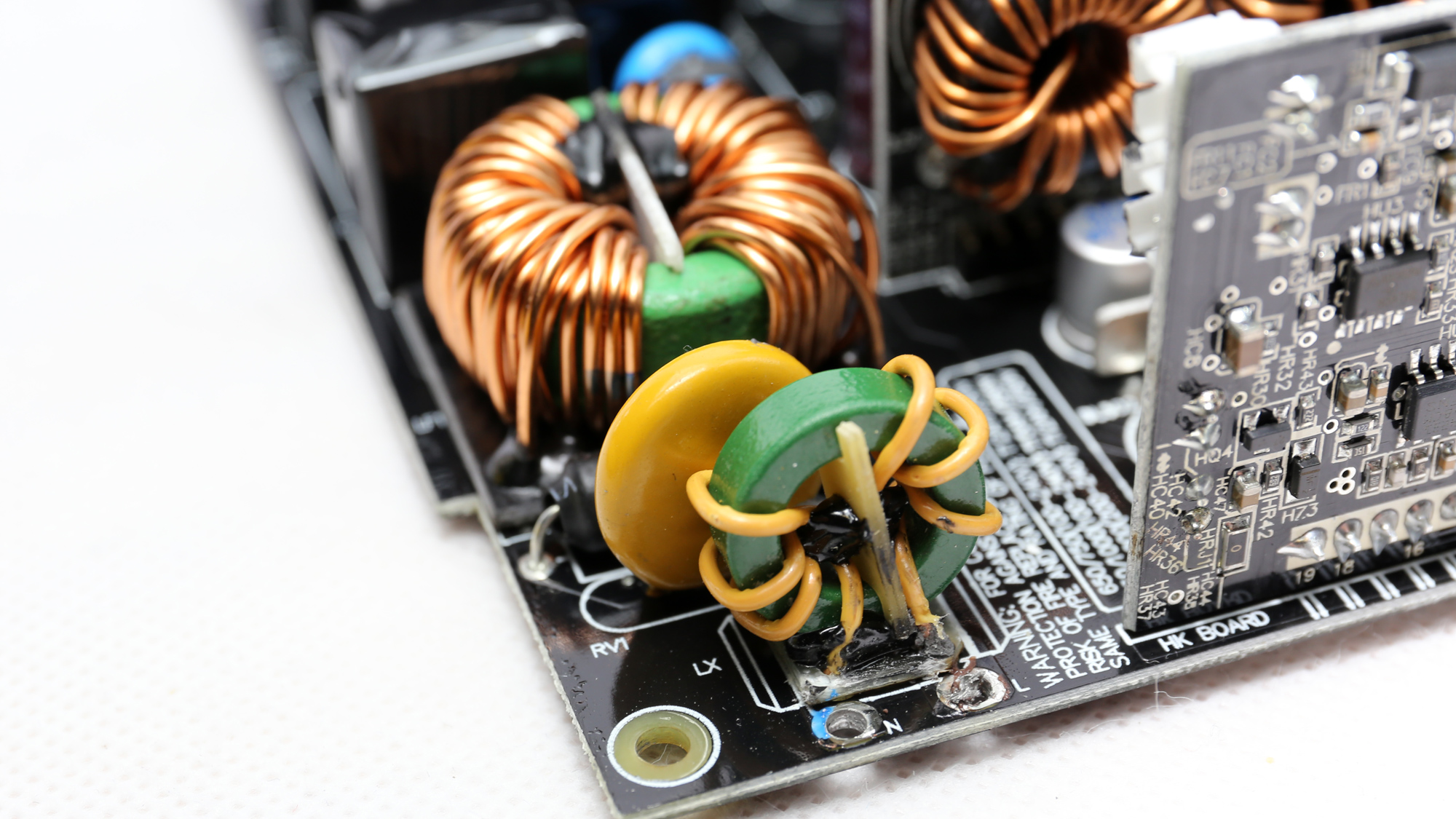
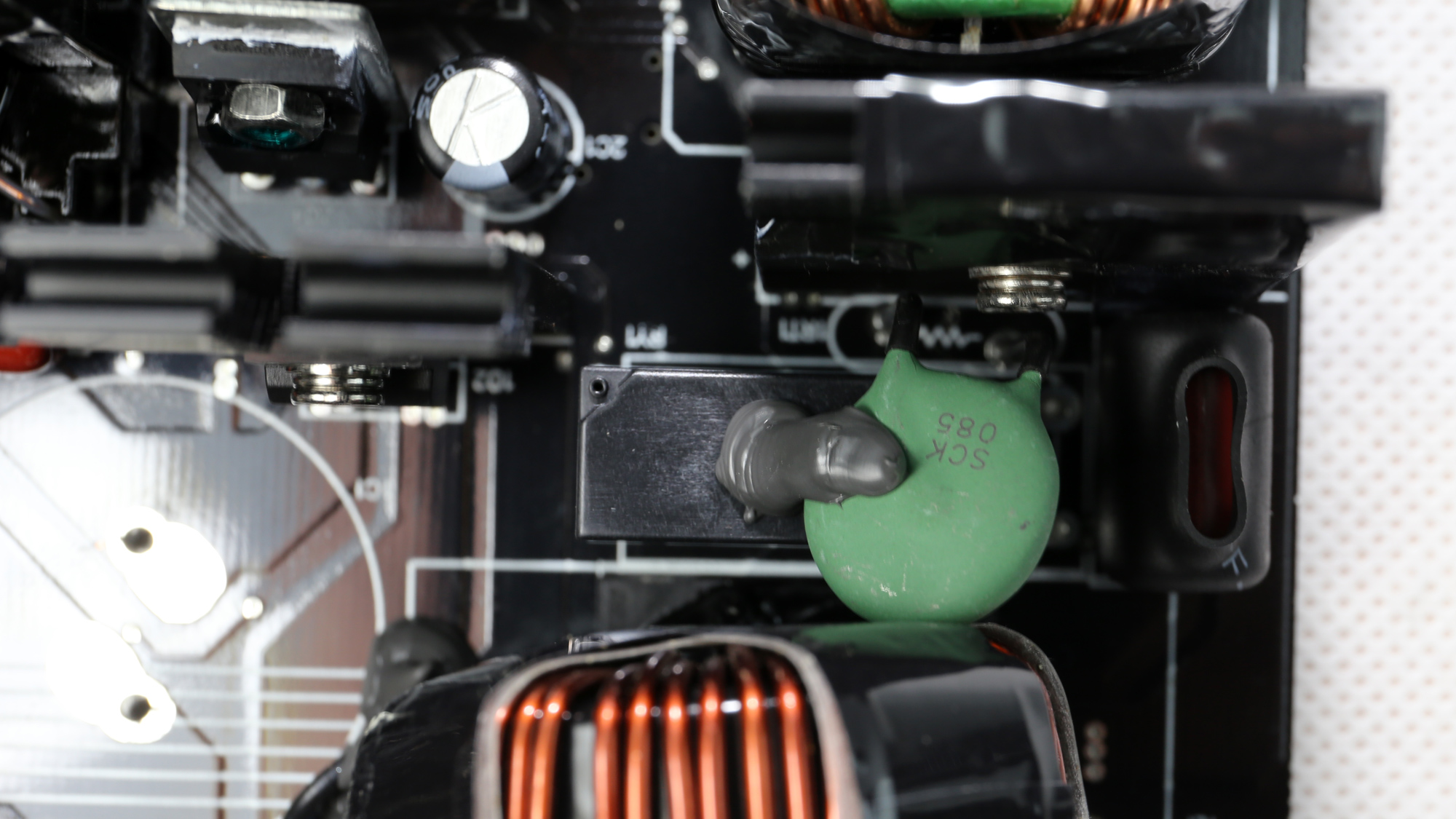
The transient filter has all the necessary parts. There is also inrush current protection through an NTC thermistor, which is supported by a bypass relay.
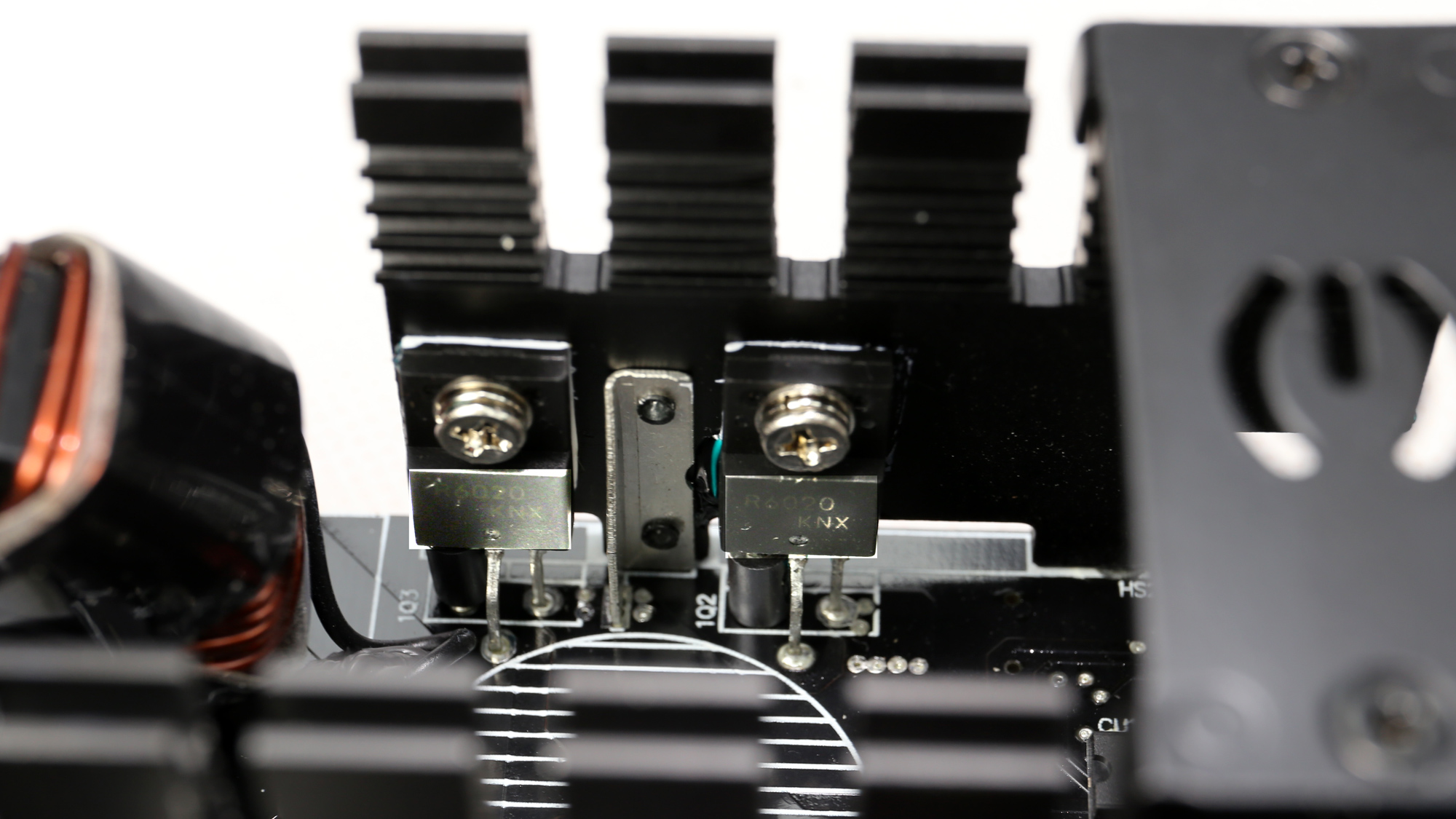
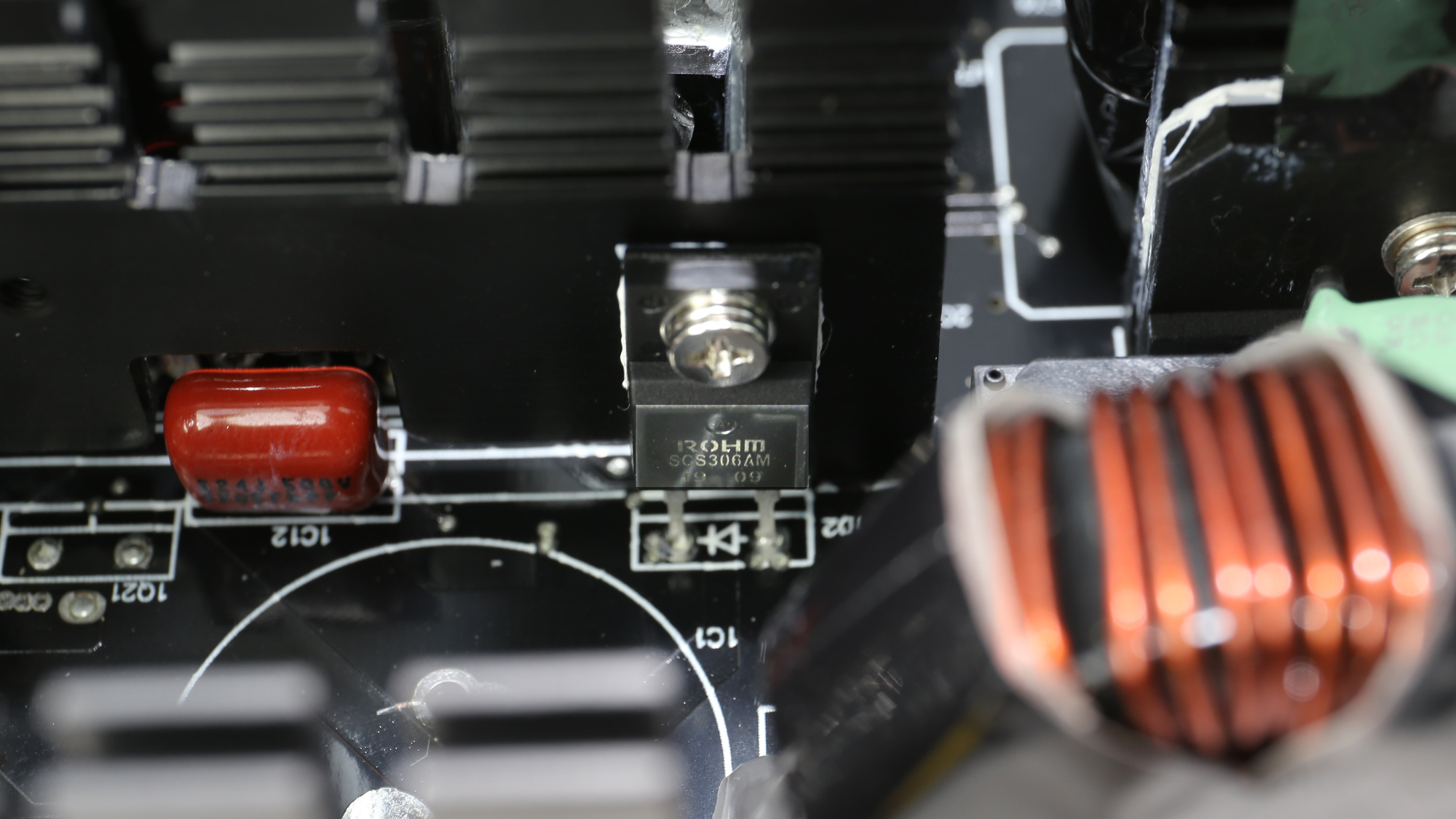
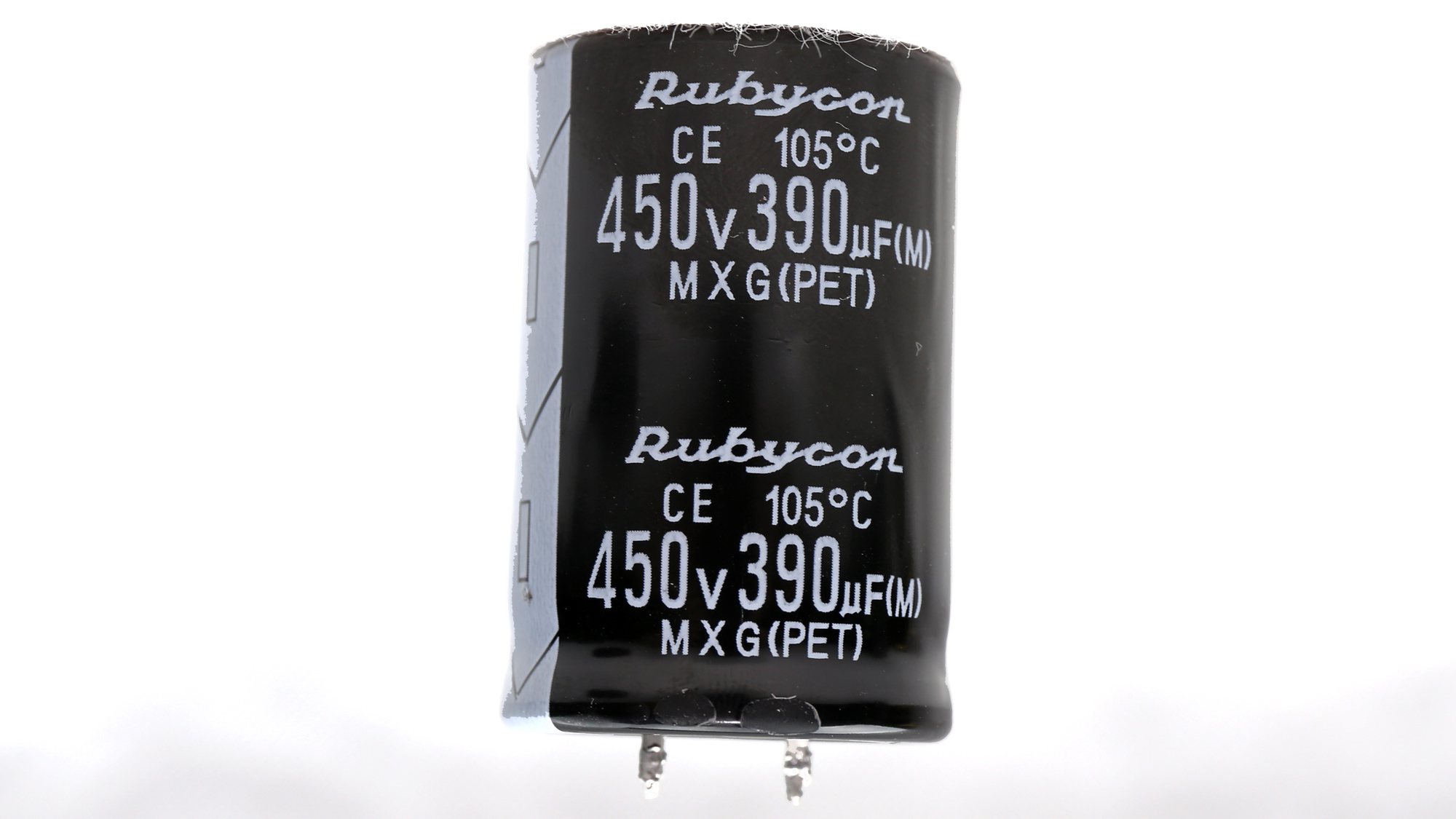
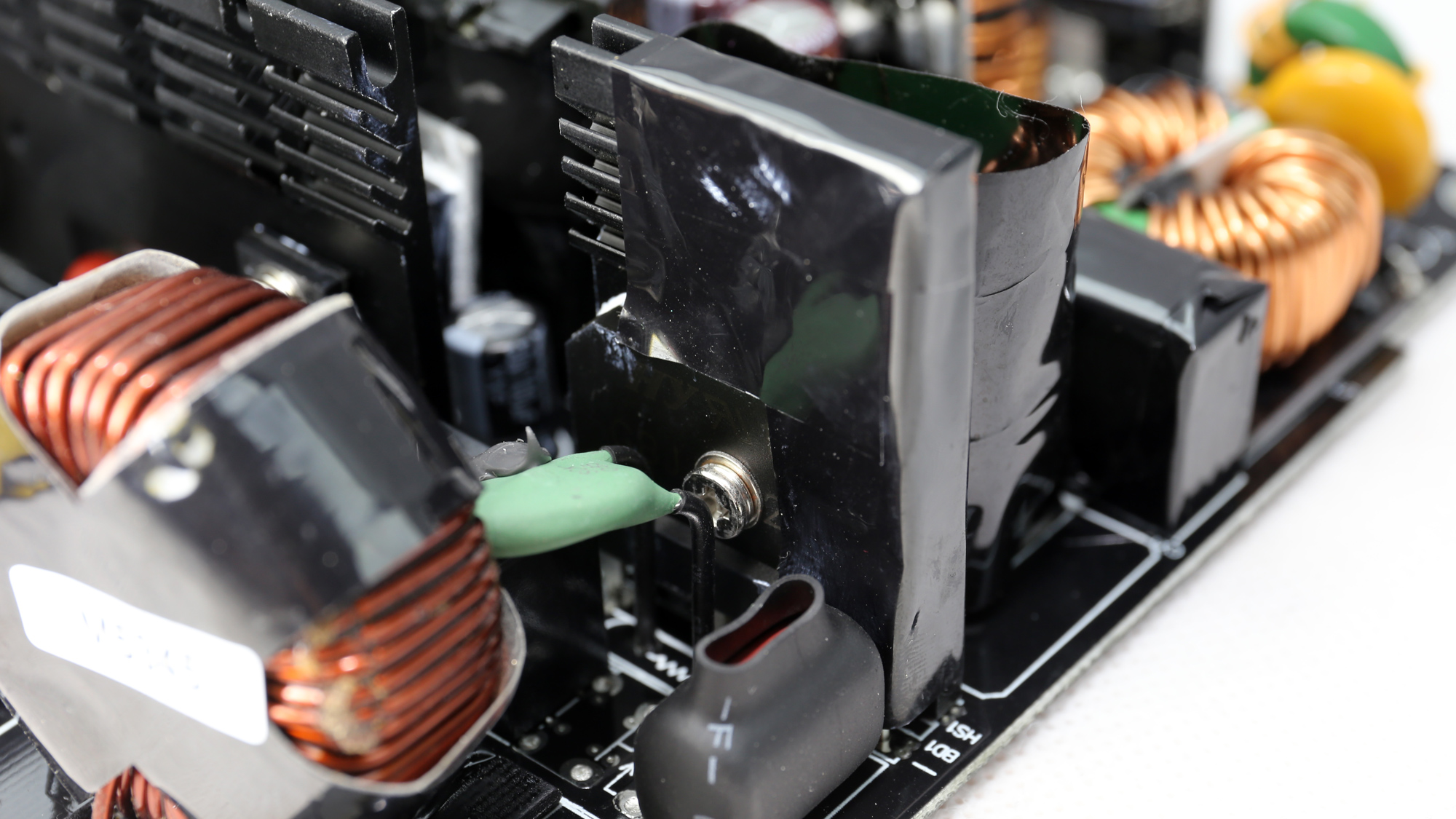
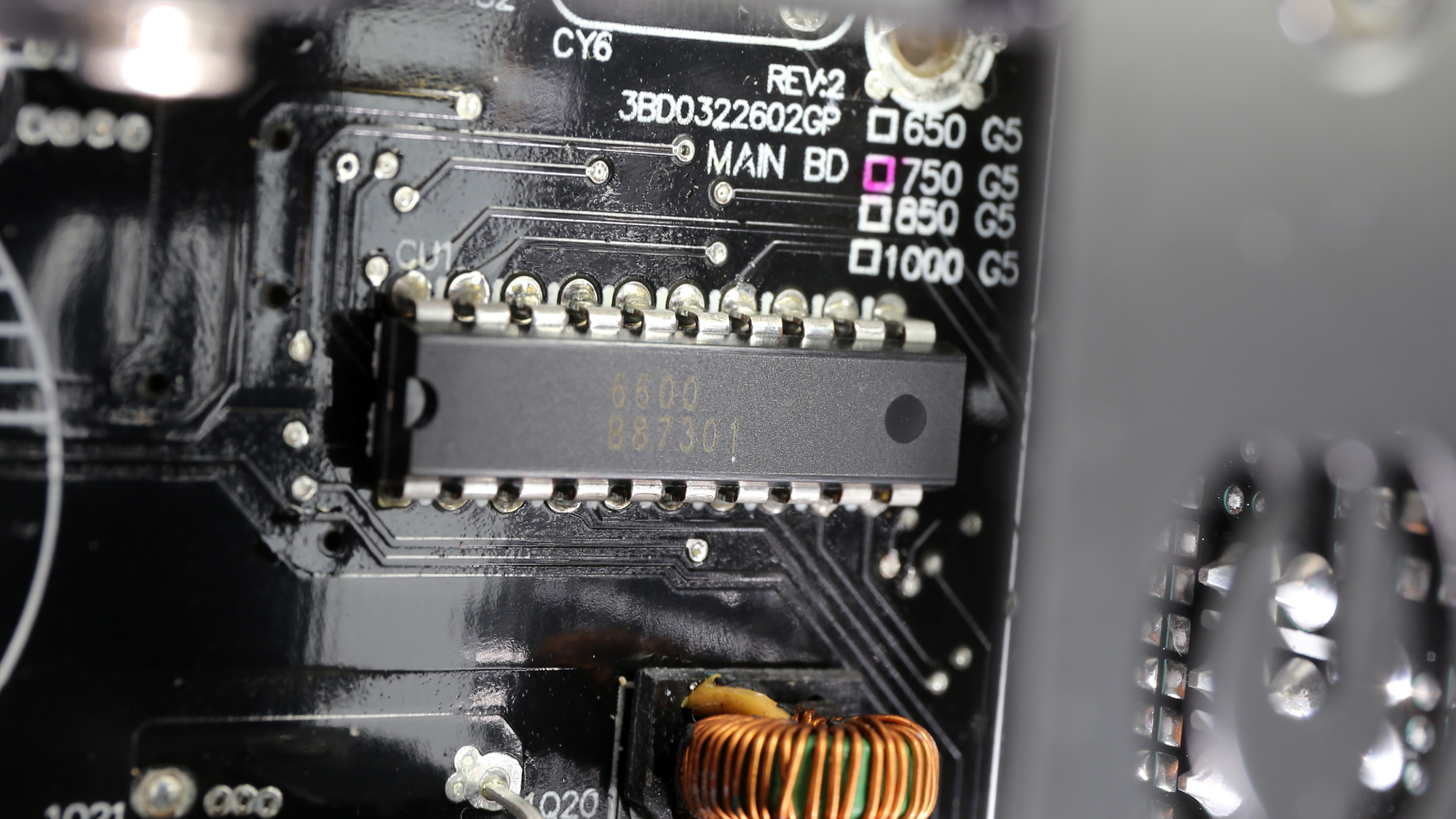
Only 390uF are enough for the bulk cap of a PSU that utilizes an ACRF topology, to offer a much longer than the required (17ms) by the ATX spec, hold-up time.

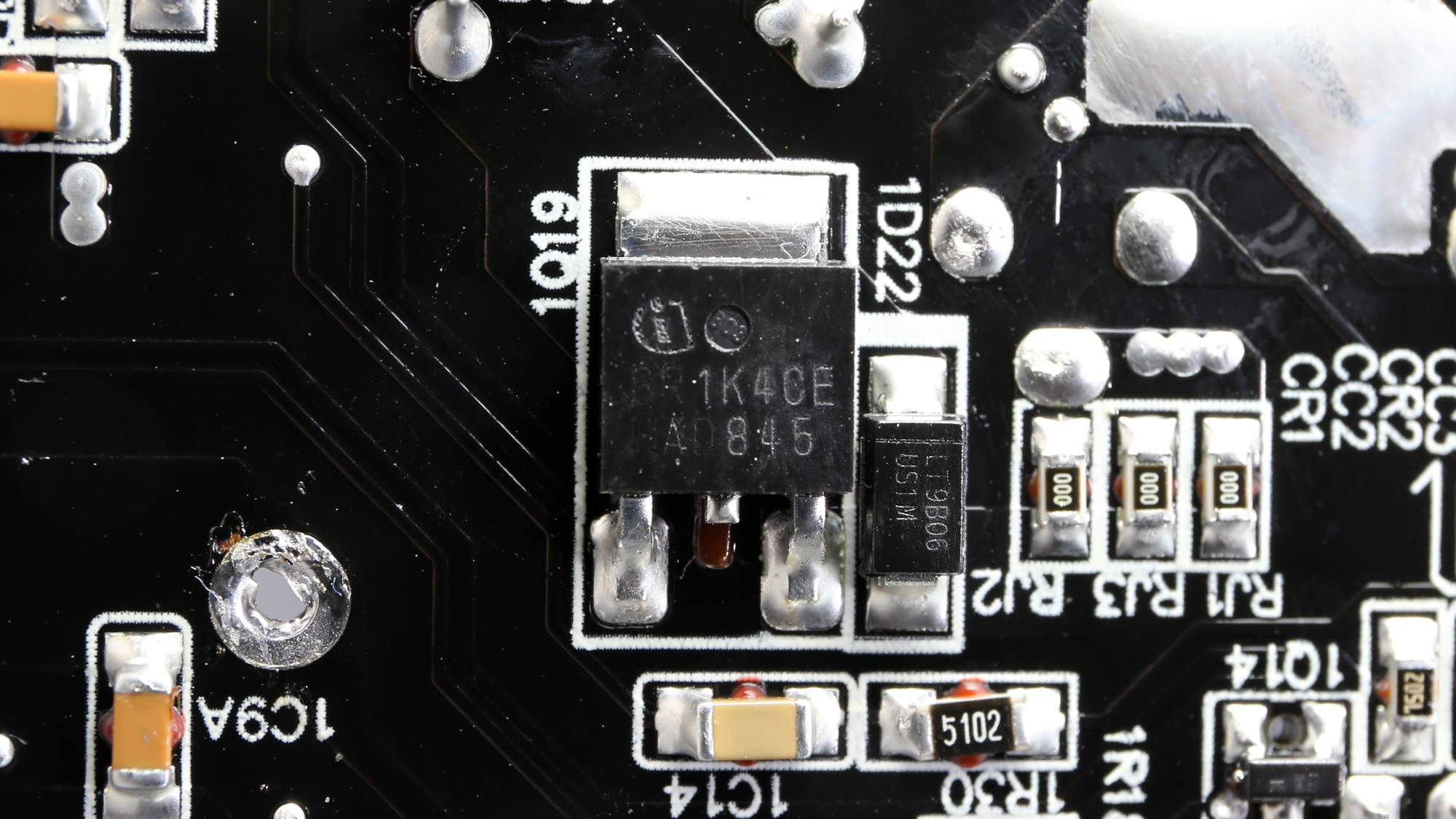
The photos above show the main switching and reset FETs of the ACRF topology.

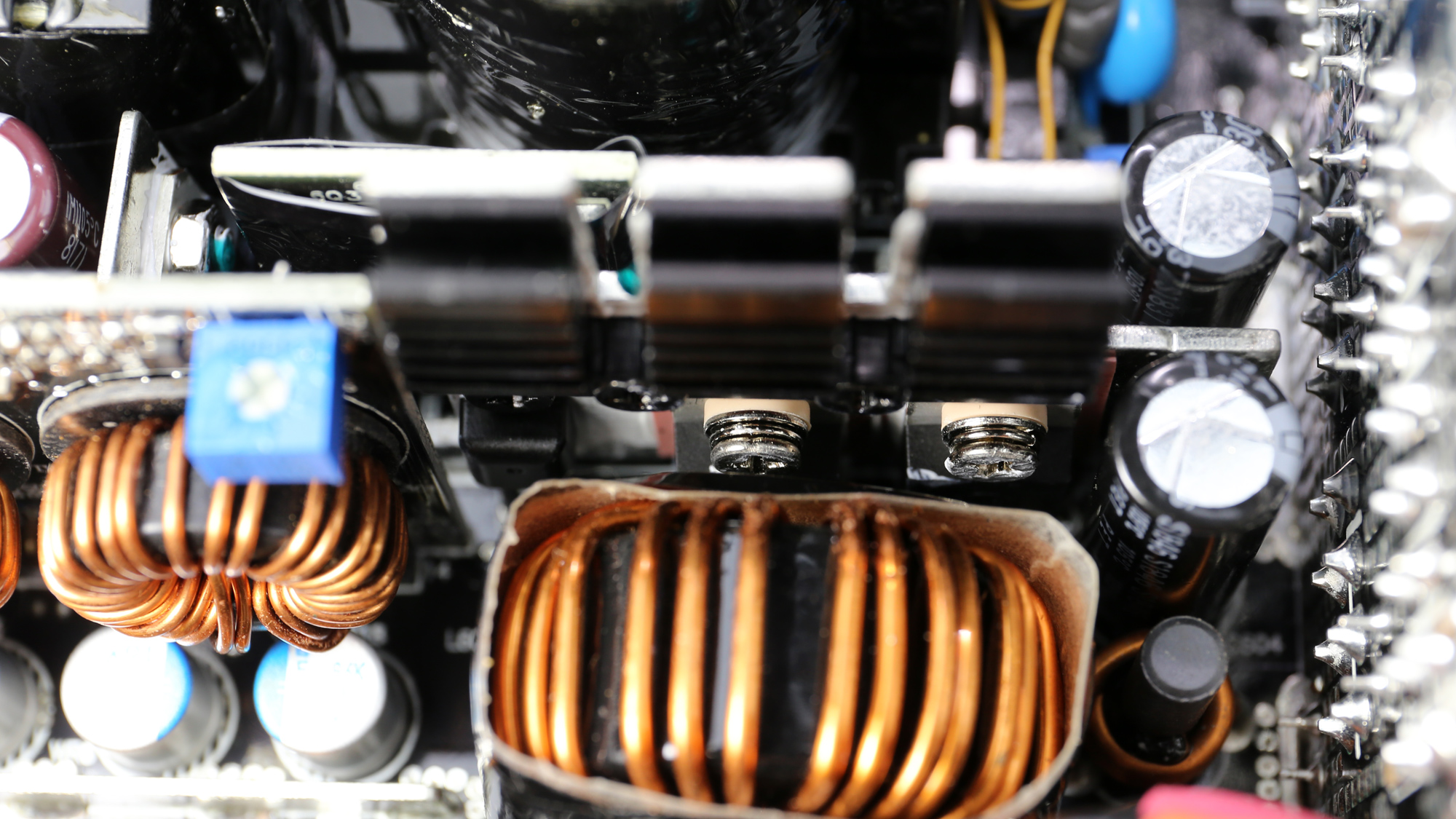

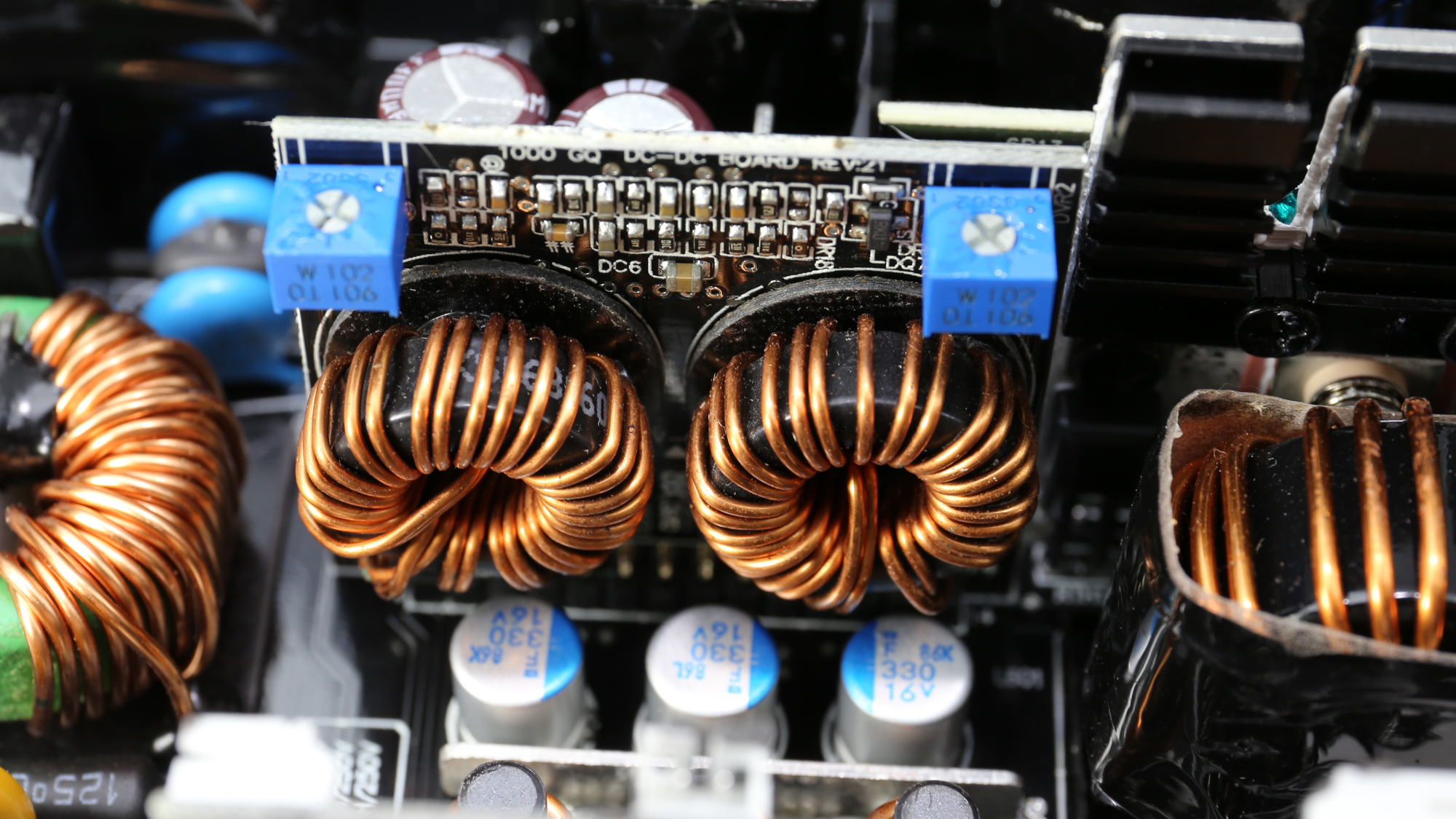
The +12V FETs are installed onto a small heat sink. Moreover, both VRMs are located on a small vertical board.



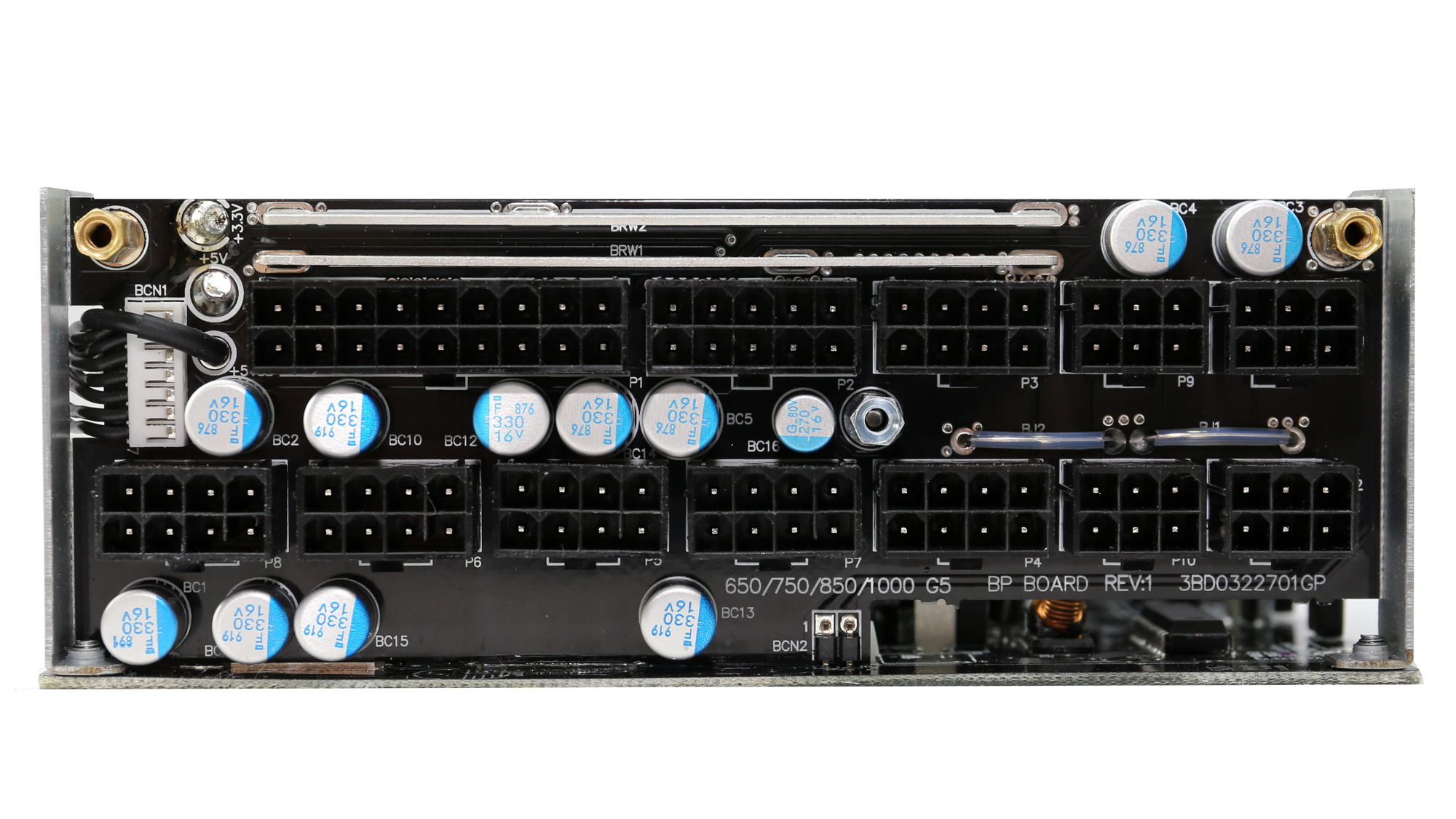
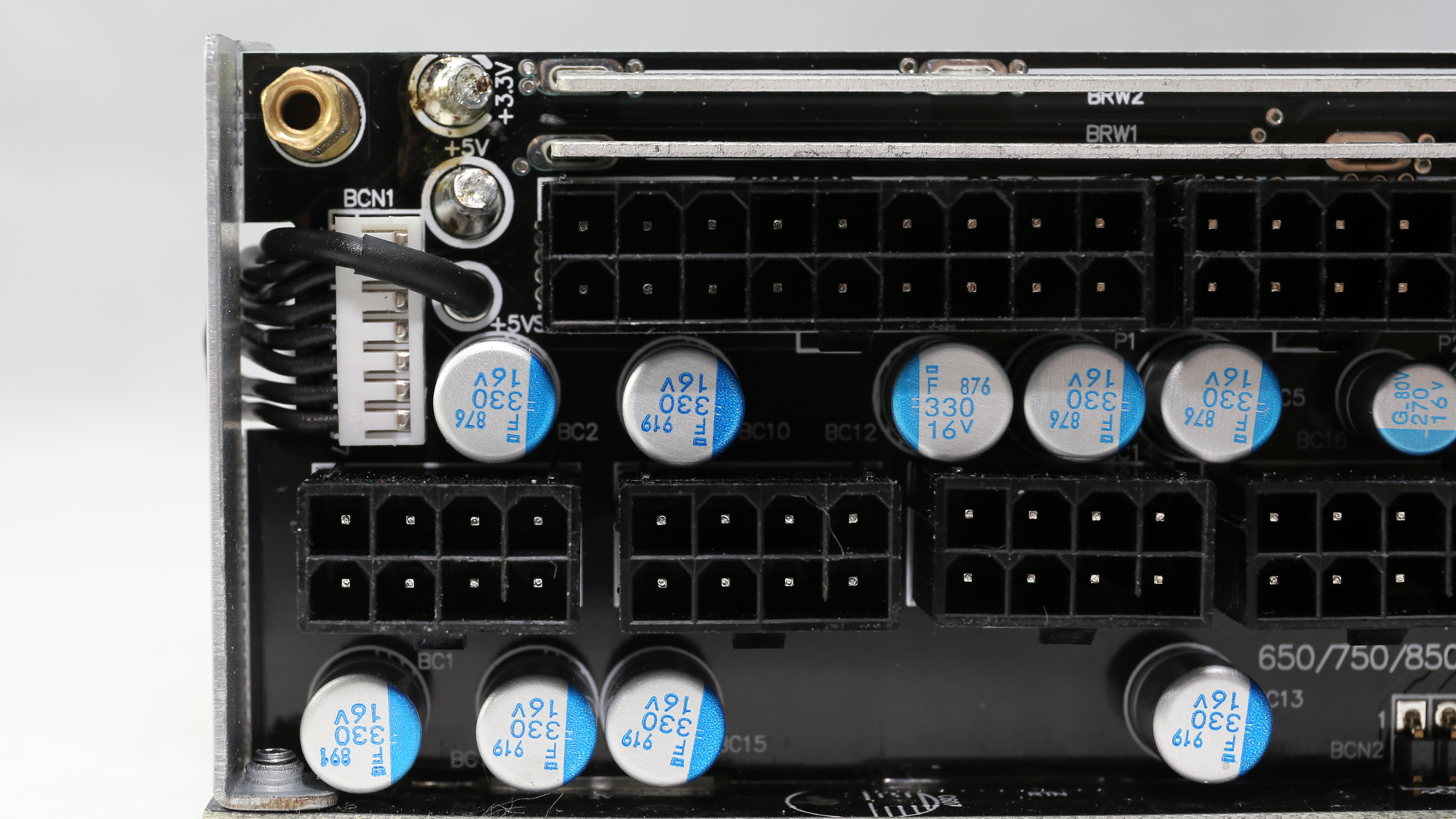
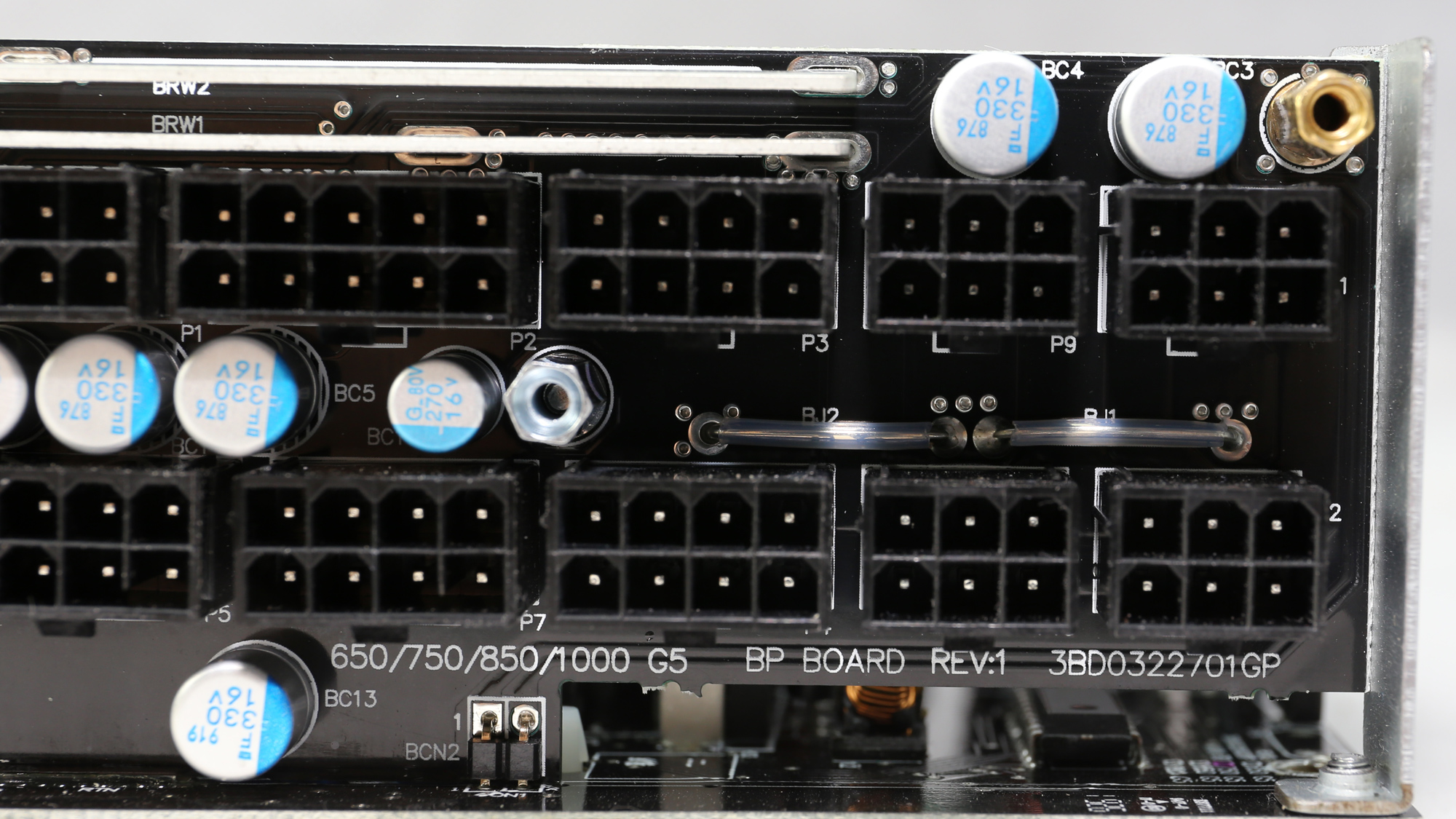
The main PCB hosts a small number of electrolytic caps, along with several polymer ones. Many polymer caps are on the modular PCB.
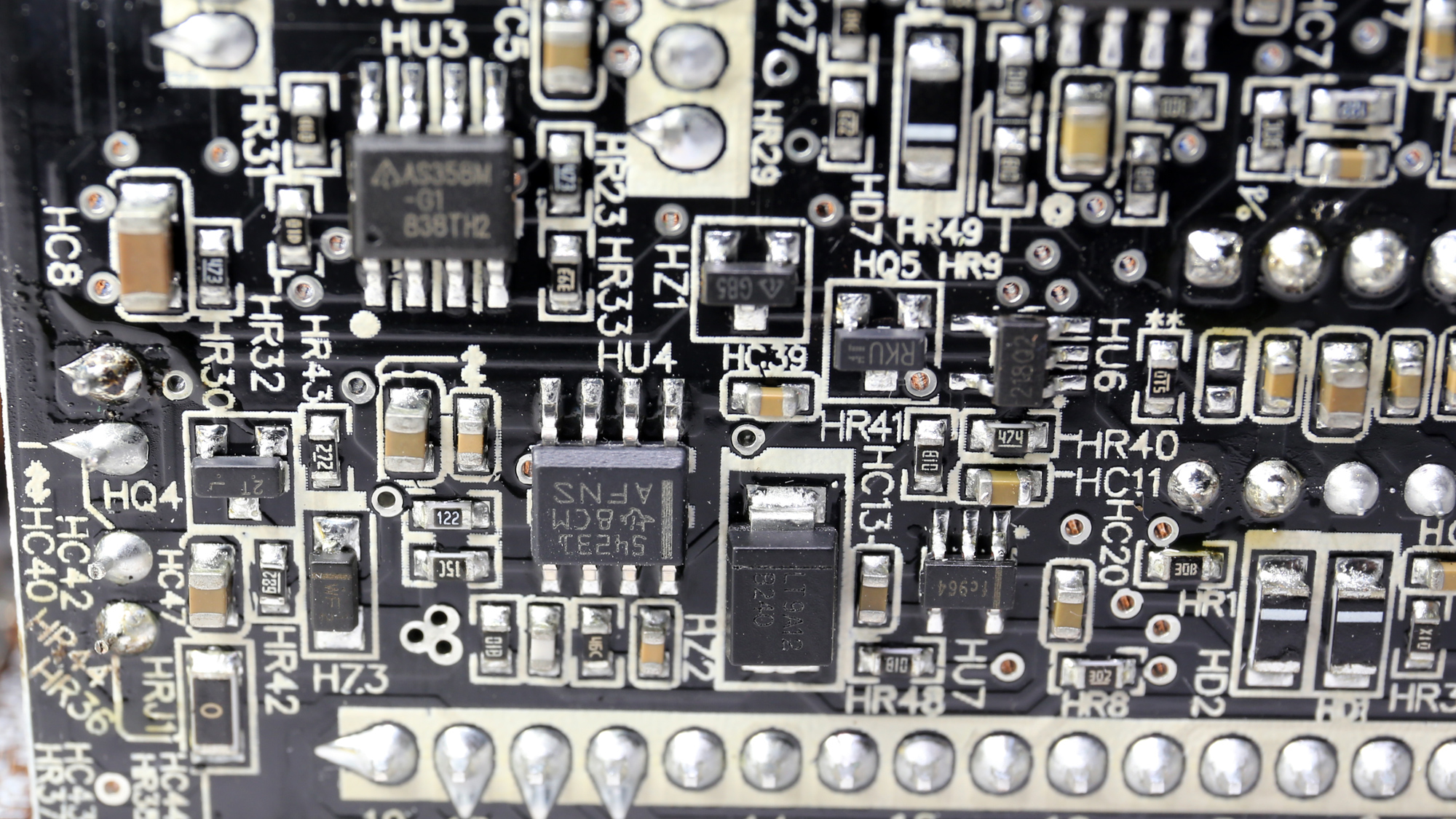
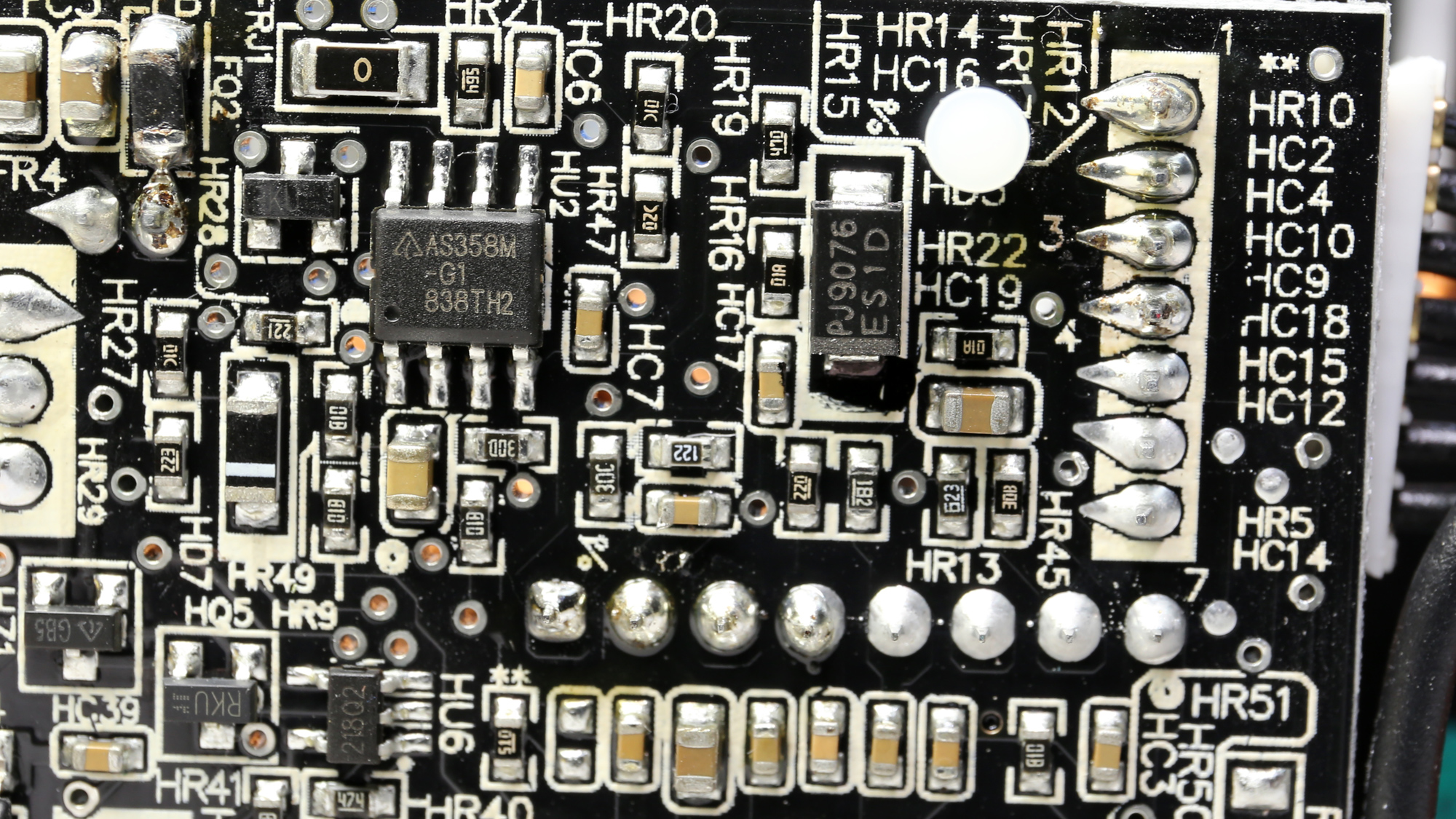
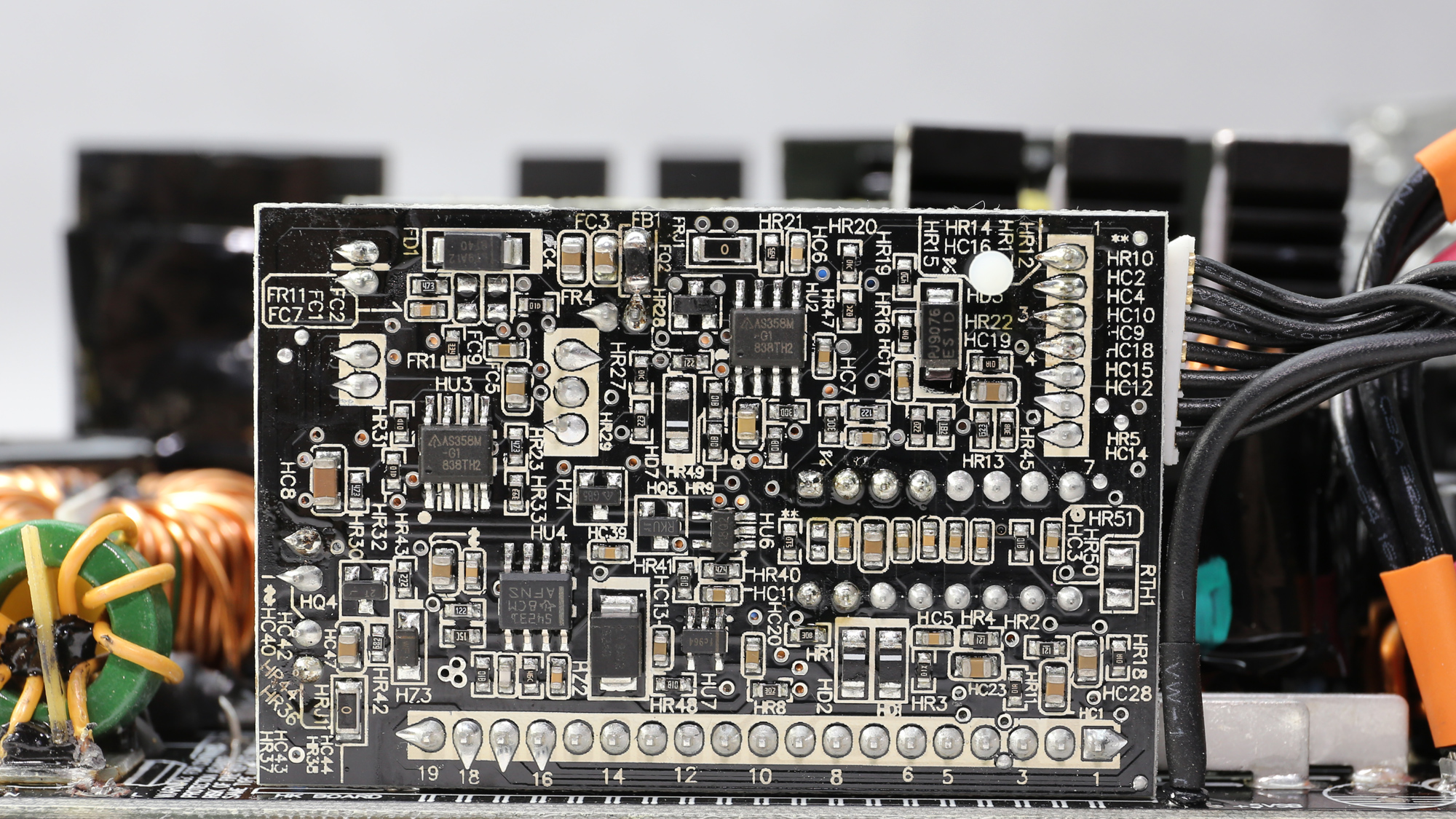

This is the board that hosts the supervisor IC along with a number of operational amplifiers (op-amps), is depicted in the photos above.
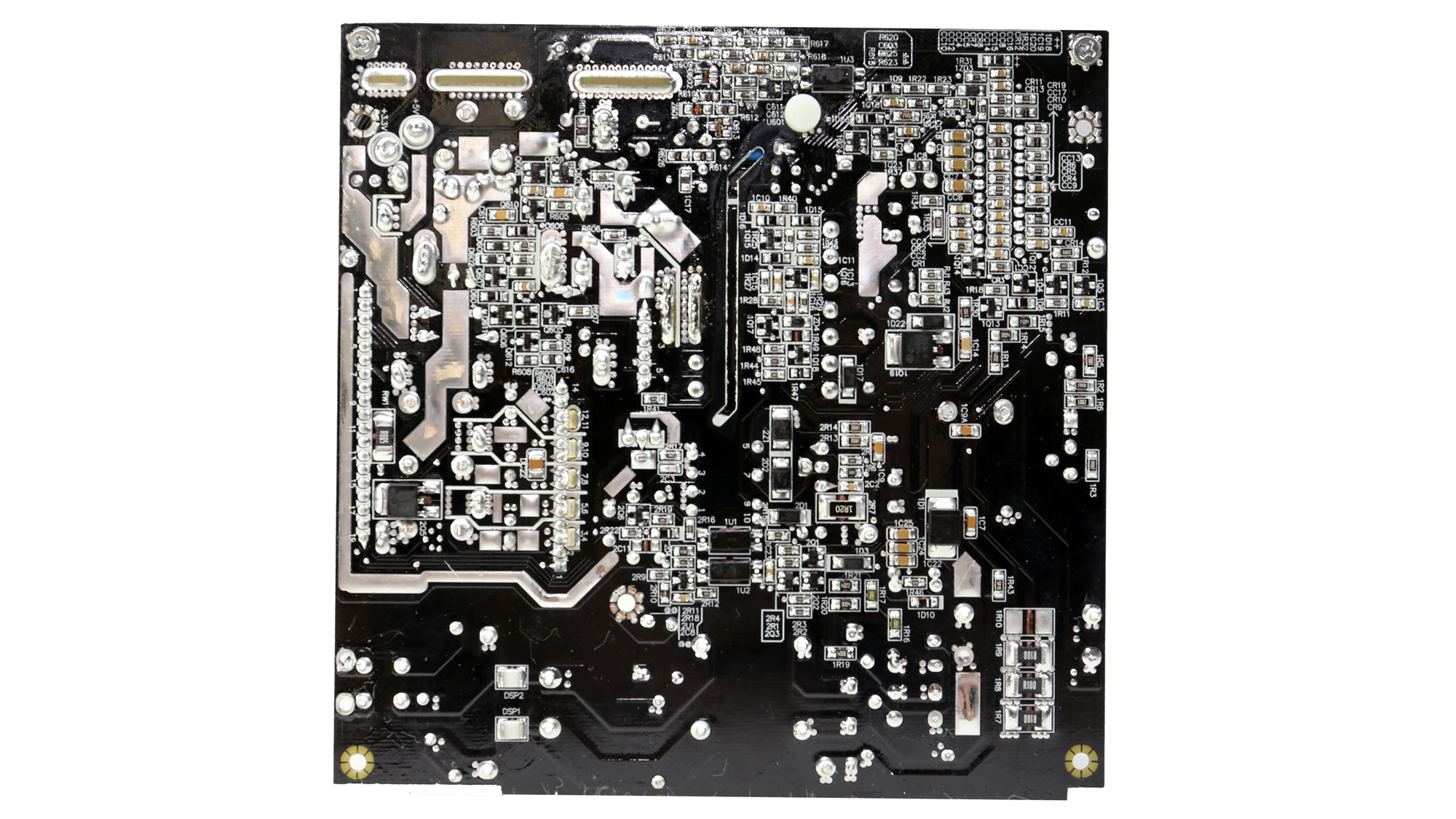

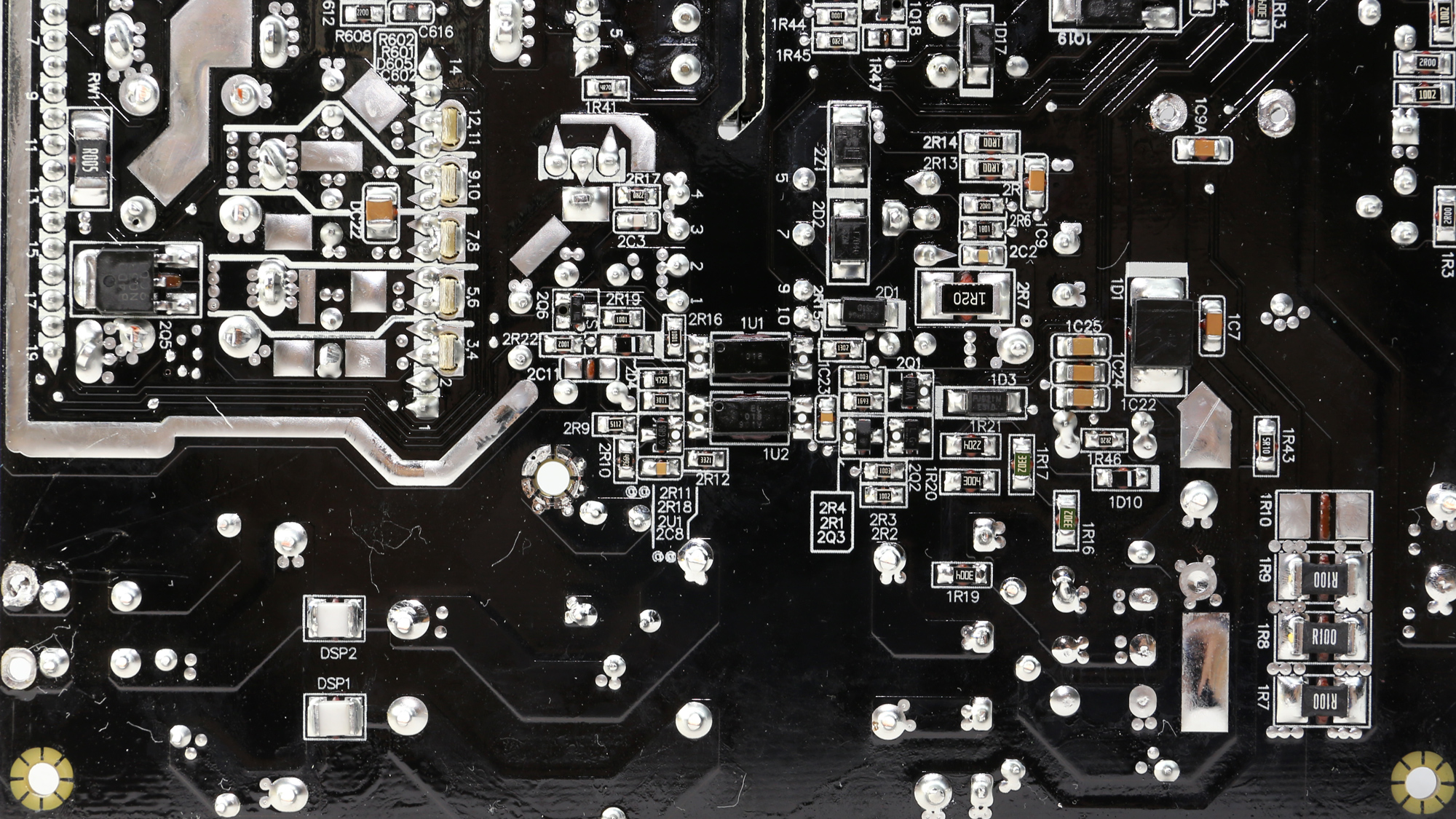

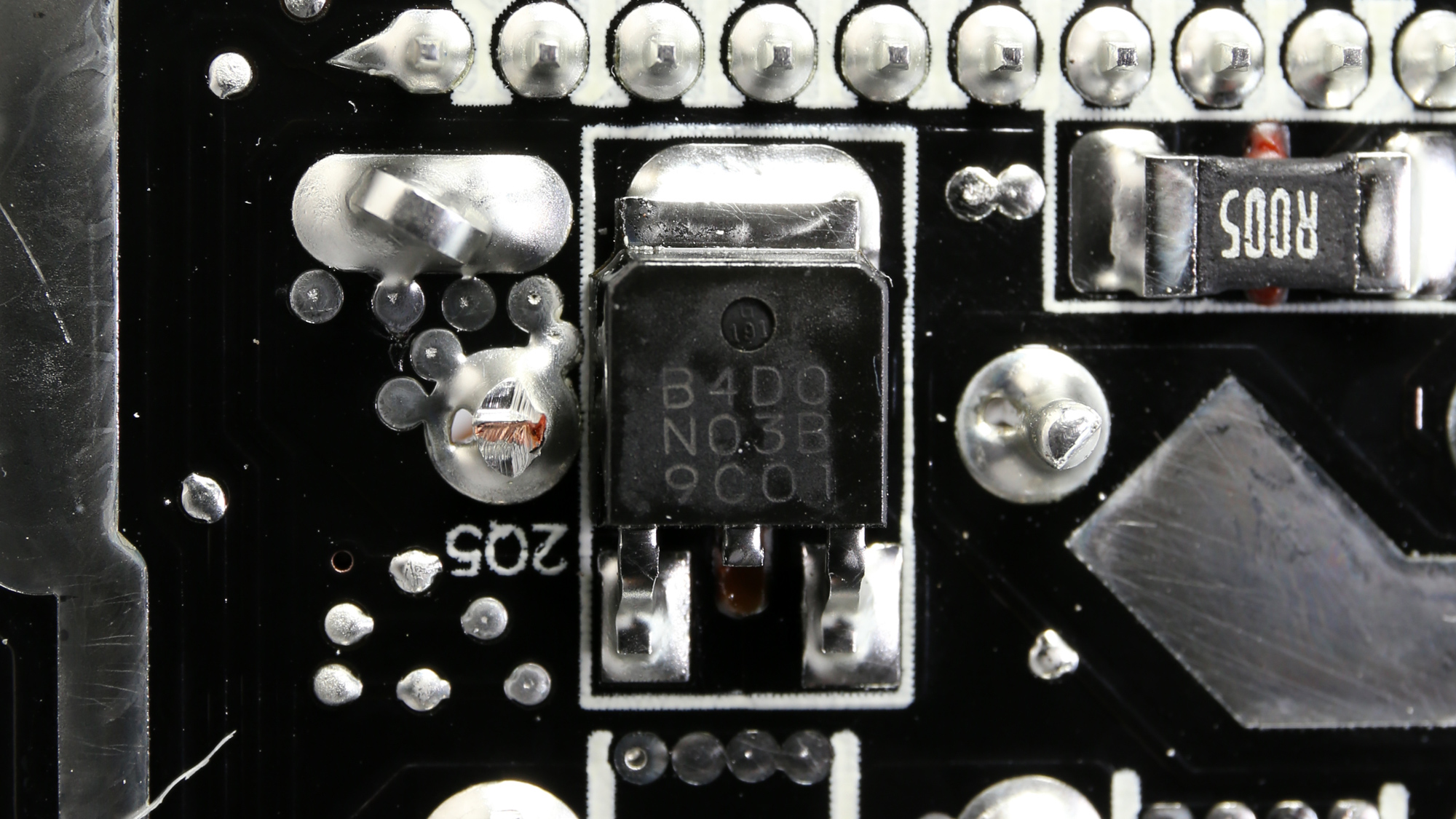
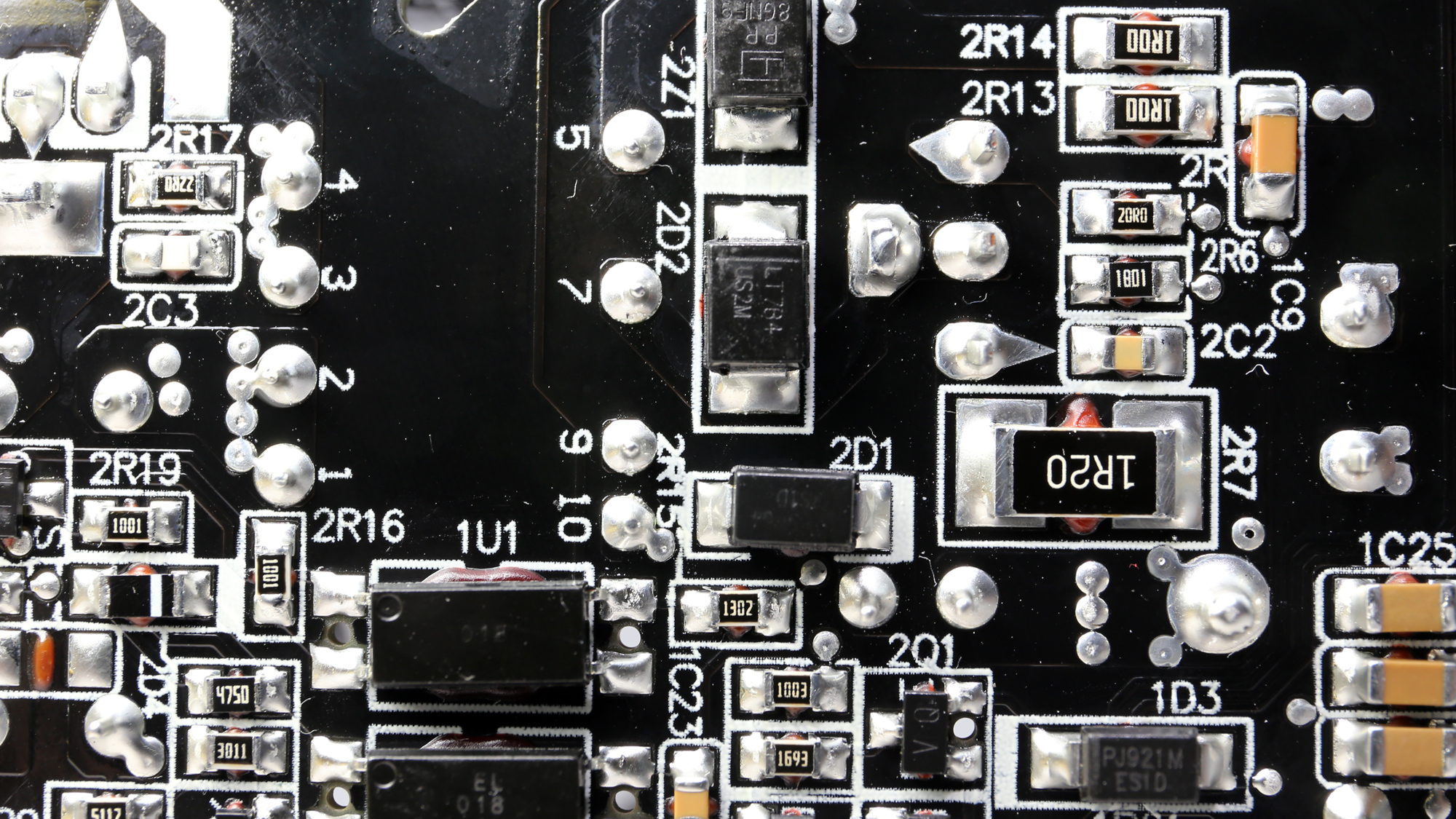
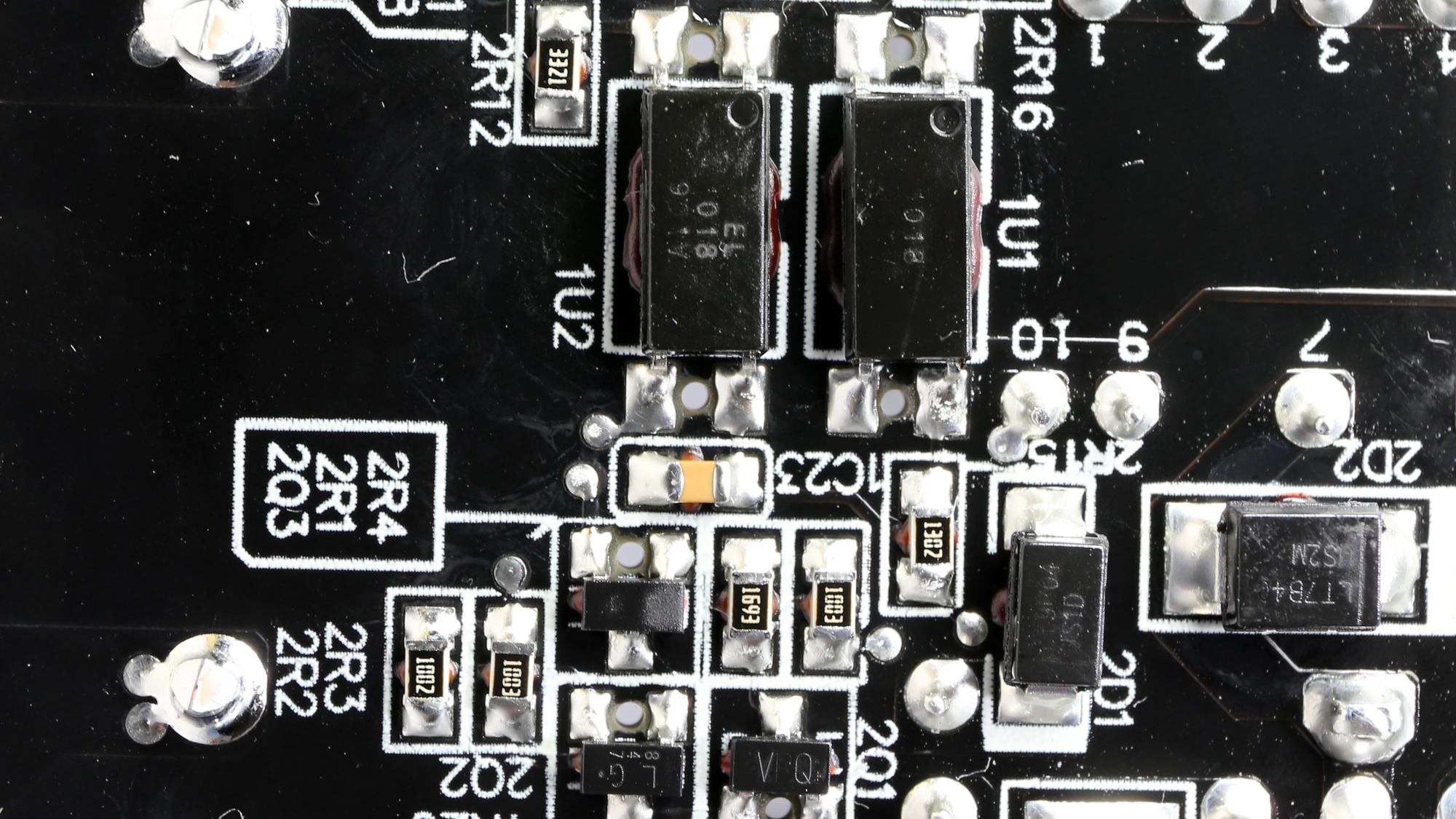
The soldering quality is good and the same goes for the build quality.
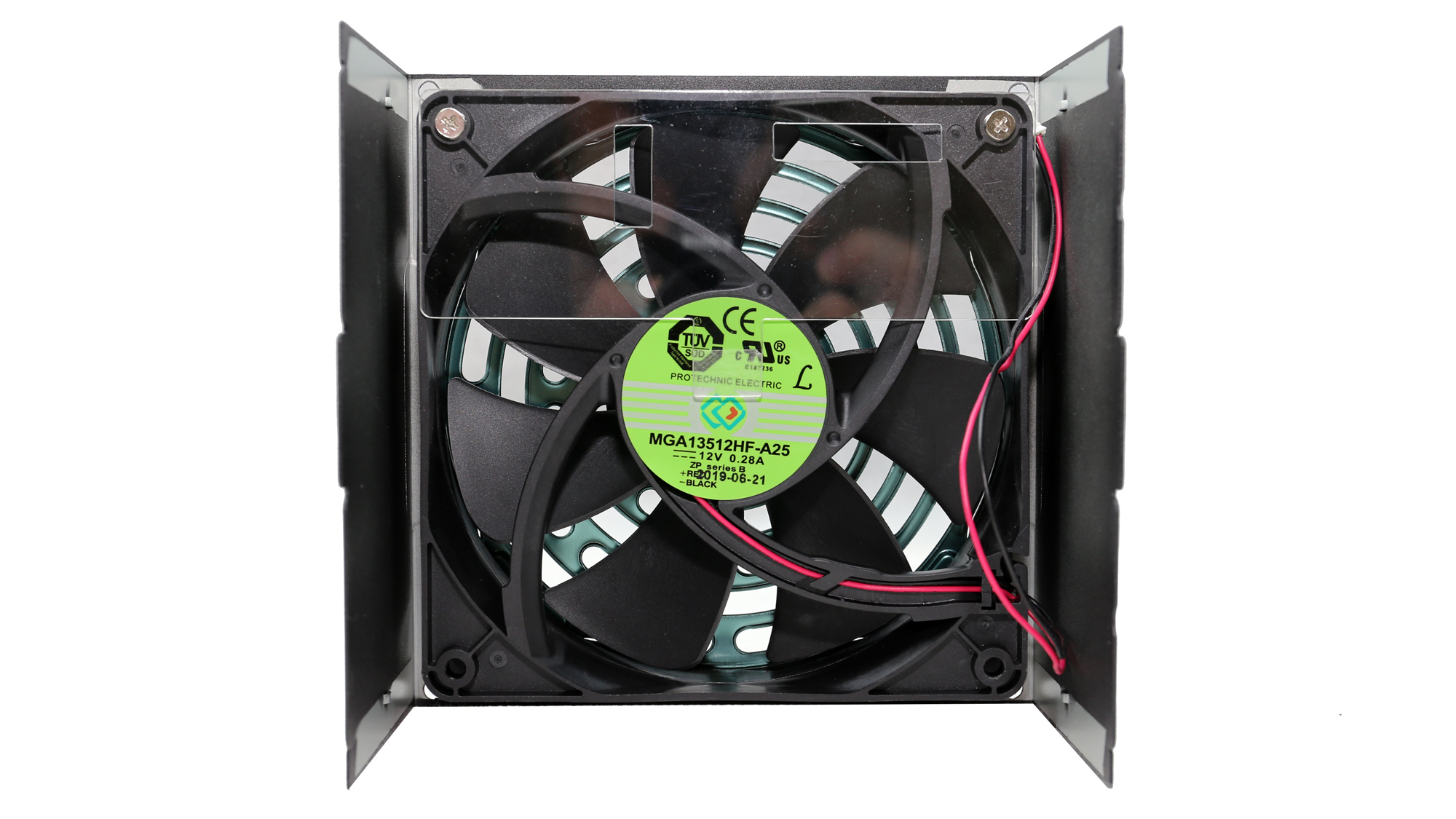

The fan is of good quality, but its speed profile is aggressive.
MORE: Best Power Supplies
MORE: How We Test Power Supplies
MORE: All Power Supply Content
Current page: Specifications and Part Analysis
Next Page Load Regulation, Hold-Up Time, Inrush Current, Efficiency and Noise
Aris Mpitziopoulos is a contributing editor at Tom's Hardware, covering PSUs.
-
Yuniel Hello Aris , you still recommened the g3 ? , beacuse aparently is in tier Tier D - Not recommended https://linustechtips.com/main/topic/1116640-psu-tier-list-40-rev-103/ , beacuse of OPP , the 850 g3 is good PSU for high end PC gaming ?Reply -
mossberg ReplyYuniel said:Hello Aris , you still recommened the g3 ? , beacuse aparently is in tier Tier D - Not recommended https://linustechtips.com/main/topic/1116640-psu-tier-list-40-rev-103/ , beacuse of OPP , the 850 g3 is good PSU for high end PC gaming ?
That list is a joke. -
agentlaidlaw Reply
linus forums are spreading fear mongering. they use toms own reviews about the G3 series as their reasoning while simultaneously ignoring toms still recommendation for it IN THOSE SAME REVIEWS. they all of a sudden don't care about the authors opinion. they pick and choose what they want to hear and spread misinformation and instill paranoia and fear mongering into people. and also flat-out ignore jonnyguru reviews for it as well. while simultaneously using jonny's reviews for recommending other power supplies.Yuniel said:Hello Aris , you still recommened the g3 ? , beacuse aparently is in tier Tier D - Not recommended https://linustechtips.com/main/topic/1116640-psu-tier-list-40-rev-103/ , beacuse of OPP , the 850 g3 is good PSU for high end PC gaming ?
do yourself a favor and ignore that dumb list. the guy who took control of it is going on a fear mongering spree and has admitted hes basing everything off his own opinion rather than facts. he doesn't like single rails and telling people single rails will blow up on them if you use them in units past 600 watts or so. he's not correcting users going around on that forum stating single rails don't support ocp / opp. he's spreading misinformation about a plethora of power supplies, hes ranking power supplies that are objectively worse over nitpicking stuff. like the g3 opp that's only a concern if you ARE ALREADY PUSHING THE POWER SUPPLY BEYOND ITS RATED SPEC NO MATTER WHAT EVEN WITH GOOD OPP YOU WILL STILL HAVE PROBLEMS IN THOSE SCENARIOS OVER TIME OF CONSTANT PUSHING OVER SPEC.
sorry for my rant but linus power supply tier has been the worse thing to come about in the community. -
WigitMigit Could I download evga's software and adjust the fan curve to deal with the loud fan issue? Or does their software not work with the g5 lineupReply -
TJ Hooker Reply
What software are you referring to? I've never heard of software that lets you change your PSU fan profile, except for Corsair link (which only works with a few of their high end PSUs).WigitMigit said:Could I download evga's software and adjust the fan curve to deal with the loud fan issue? Or does their software not work with the g5 lineup -
WigitMigit Reply
https://www.evga.com/supernova/TJ Hooker said:What software are you referring to? I've never heard of software that lets you change your PSU fan profile, except for Corsair link (which only works with a few of their high end PSUs). -
TJ Hooker Reply
Interesting, didn't realize EVGA had something similar. But it looks like it works only with that one PSU model from ~7 years ago, guess it's not too surprising I hadn't heard of it.WigitMigit said:https://www.evga.com/supernova/ -
VTEC_Inside There is an issue with this review IMO.Reply
Active Clamp Reset Forward designs characteristically hold steady voltages better.
The criticism regarding transient response is flawed in that it is not tested the way that people are actually going to use the things, ie with the caps in place.
While I'm sure no one is stamping an official seal of approval on PSUs, I'd imagine they'd be ripped on pretty hard if it didn't actually adhere to ATX specifications.
Evga's marketing wank goes on about the higher quality capacitors on the output board. A more useful test, IMO, would be to test that transient response under conditions that people are actually using the thing. Given that it only slightly failed this testing methodology without the caps, I'm left to believe that it would do just fine tested in a real world situation.